RANZ Conference 2023
ALL YOU NEED TO KNOW
Exoskeleton trial – Results & findings
Construction Contract Act (CCA) – It’s there for you – use it
Large-scale sustainability – APL Building, Cambridge
What can we learn? – Common NZ customer complaints
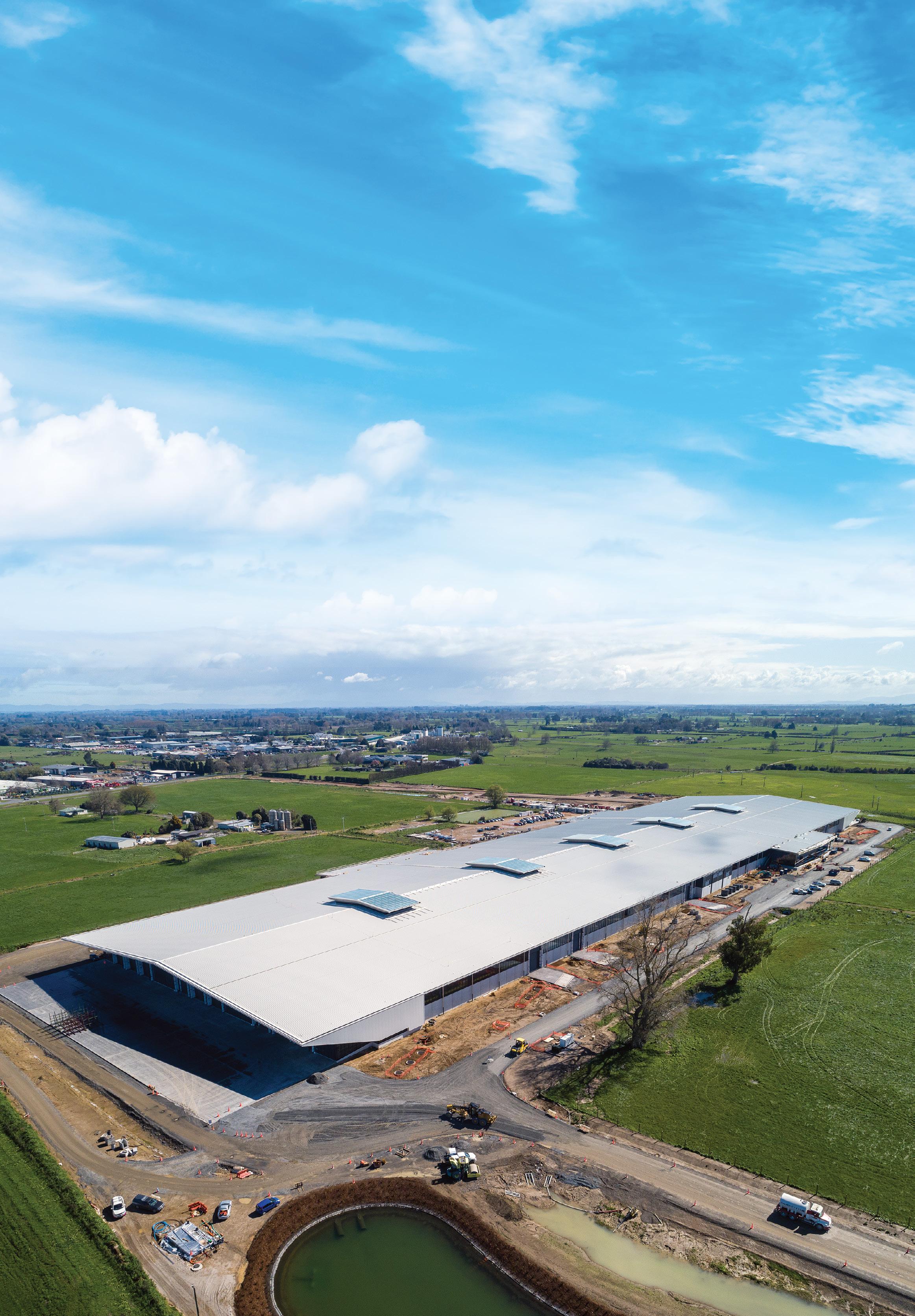
THE OFFICIAL MAGAZINE OF THE ROOFING ASSOCIATION OF NEW ZEALAND AUTUMN 2023 • ISSUE 104
RANZ SUPPORTERS
2023
RANZ NATIONAL SPONSOR BUSINESS PARTNERS



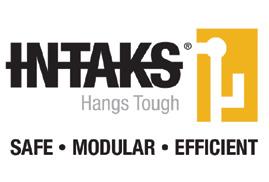
Inside this issue
4 Cyclone Resources
At a glance: Roofing sector support and information.
5 CEO Message from Graham Moor
6 From the Rooftops
Bite-sized snippets of news from around the country.
8 RANZ Conference 2023
All you need to know.
11 Exoskeleton Trial
The results are in. What do we know?
14 Business Construction Contract Act (CCA): use it for all your customers.

17 Sustainability
Roofing industry leading the way.


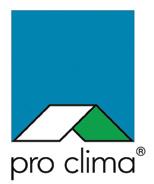

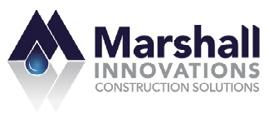
20 Member Profile
Ascent Roofing – setting sights high.

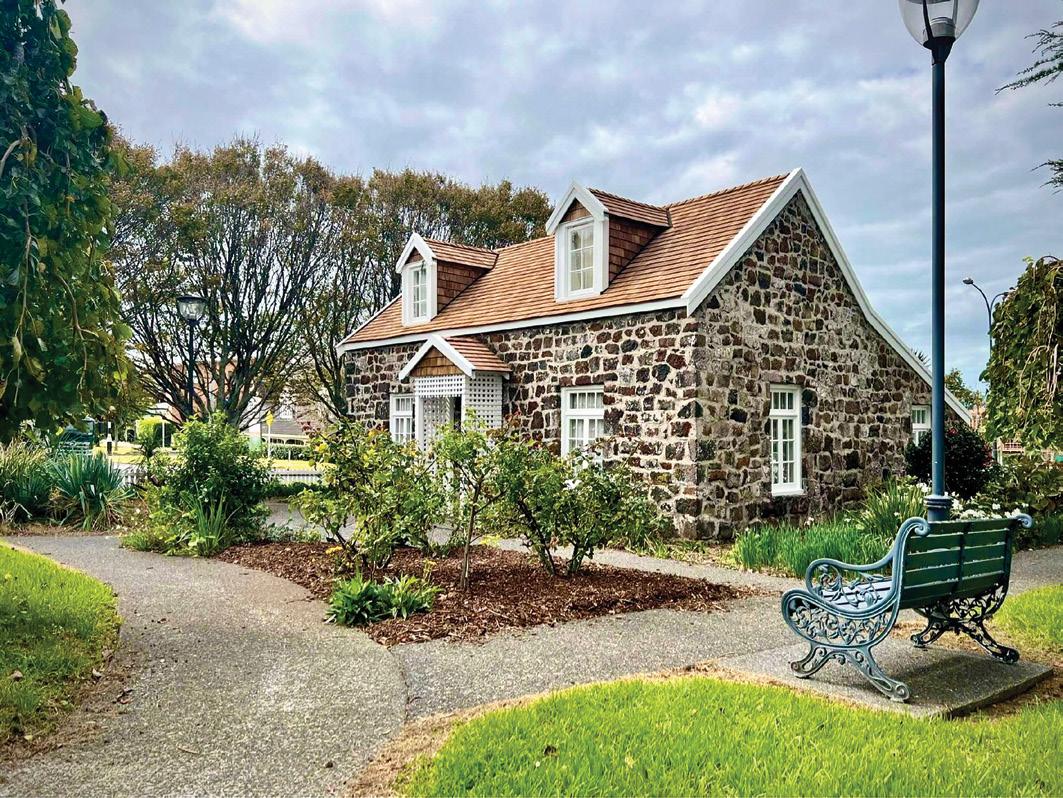
25 Commercial Roofing Project
APL Building, Cambridge – Harkin Roofing.

29 NZWiR

Imposter Syndrome – you’re no fraud.
33 What can we learn?
Common topics of NZ customer complaints – and how best to deal with them.
36 Training
VHNZ – Where to get financial support for roofing apprenticeships.
39 Meet the Team Noel Sands.

MEMBERS – PLEASE SUPPORT OUR SPONSORS
PLATINUM SILVER BRONZE
BLUE RIBBON
20
Stronger together
Kia ora tātou,
To the folk in Hawkes Bay and in Auckland, the Coromandel, Northland and surrounds impacted by cyclone and flooding events, facing rebuilds and/or relocations – please know that we stand with you now and into the rebuild phases. A RANZ webpage hosts resource and support updates for network customer advisory and/or individual/ business support. And your RANZ office team can also serve as a connector for offers of support for the RANZ Member network – see p4 for more details.
As a roofing sector, we largely wait in the wings for now, ready to mobilise for the rebuild efforts in due course, with valuable learnings from Christchurch to bring to the table and our general aptitude and strengths in challenging situations.
The CCA is a contractual tool that has been hard-won and crafted to be there for you –for every job across residential and commercial projects. Let’s do our part in roofing to contribute good business standards, stability and consistency to the sector as much as possible in these uncertain times by utilising the CCA. Surely having extra, readily available cashflow-safeguards in place will help support roofing industry leaders individually, too, not least for wellbeing by helping to minimise a common stress point in business. See the article on p14 for details on how and why you should use the CCA from your RANZ Executive Committee member, Michael (Bucko) Sentch. CCA expert Peter Degerholm will also be presenting at the RANZ 2023 conference, covering some developments to the legislation in the works.
RANZ 2023 Conference is set to be in beautiful Nelson for the first time on 27th and 28th July – see p8 for programme and accommodation details. And be sure to get your entries in for the RANZ Awards, too (p12), which we’ll celebrate in style at the Thursday dinner.
Sustainability has seemed like an issue that generally sits outside the camp of a roofers’ primary concerns; however, with bipartisan legislation changes and head contractor policies, it’s fast becoming a relevant and necessary business adaptation and development topic for the sector. It’s worth remembering that sustainability is also essential to younger, future roofing generations. The Construction Accord’s lead on sustainability has written an article for us that offers a foundation and practical commentary on how roofing is already ahead of the game on the Accord’s sector transformation plan’s circular economy and waste management priority initiatives for 2023. For an insight into how we can continue on this trajectory and make further gains see p17.
The APL building in Waikato has received recent press attention for its sustainable building process and equally sustainable results with impressive energy efficiency. Harkin Roofing was on this project, and they share their learnings from the large-scale commercial build and insightful case study in roofing sustainability solutions in action (see p25).
We appreciate how busy everyone is, but please be sure to get your entries in for all our upcoming Roofing Awards! Taking moments to share and celebrate together your achievements and outstanding daily work each year is very valuable and well worthwhile.
Enjoy your Autumn RoofLink team; Kia pai tāu pānui! Happy reading!
Ngā mihi nui, many thanks.
Stephanie.
Stephanie Fill Marketing Manager and Editor
ROOFLINK® SUBSCRIPTIONS
Rooflink® is available on an annual subscription basis to non-member businesses, organisations, licensed building practitioners and individuals whose primary business activity is not directly involved with roofing (eligibility terms and conditions apply).
Businesses or individuals in the roofing sector whose primary business/activity is roofing and who would be eligible to apply for RANZ membership, are not eligible to subscribe.
Enquiries to RANZ on +64 9 415 0278
Annual subscription fee includes 4 issues per year.
Within New Zealand – $80 +GST | International subscribers – NZ$100
President Jenny Maxwell, Christchurch

Phone: 03 338 0400
Email: jenny@csroofingcanterbury.co.nz
Vice President Paul Stanley-Boden, Christchurch
Phone: 027 290 2446
Email: info@redandblack.co.nz
Executive Committee
Mark Bishop, Christchurch
Phone: 021 376 629
Email: mark@roofsafenz.co.nz
Eddie Tell, Auckland
Phone: 021 388 863
Email: eddie@superiorwaterproofing.co.nz
Mason Fisher, Nelson
Phone: 021 281 7653
Email: mason@maxsafe.co.nz
Gary McNamara, Auckland
Phone: 09 274 4097
Email: gary.mcnamara@roofguard.co.nz
Michael Sentch, Hamilton
Phone: 07 849 1700
Email: michael@projectunite.co.nz
Victoria Elvin, Auckland
Phone: 09 274 4056
Email: victoria.elvin@steelandtube.co.nz
Chief Executive Officer Graham Moor
Roofing Association of New Zealand PO Box 302272, North Harbour
Auckland 0751, New Zealand
Phone: 09 415 0278 or 027 702 0452
Email: ceo@ranz.co.nz
Editorial and advertising contact Stephanie Fill
Roofing Association of New Zealand PO Box 302272, North Harbour
Auckland 0751, New Zealand
Phone: 09 415 0278 or 027 702 0451
Email: editor@ranz.co.nz
Content coordination by John Williams
Design by Stephanie Thatcher
Rooflink Disclaimer
By-lined or signed articles represent the view of the author. No endorsement or warranty is either expressed or implied of products mentioned in editorial stories.
Product News, Advertorial and Advertisements:
a) These articles and advertisements are submitted by our advertisers, the content of which is not necessarily the opinion of the Roofing Association of New Zealand.
b) The Association accepts no liability for the accuracy of information contained therein or for any statements or claims made by advertisers.
© Copyright Roofing Association of New Zealand 2020. No part of this magazine may be reproduced without prior permission of the Roofing Association of New Zealand.
3 Issue 104 • Autumn 2023 FROM THE EDITOR
RANZ CONTACTS www.ranz.co.nz
Produced by Centurion Print 11 McDonald St, Sandringham Auckland 1025 Phone: 09 849 8313 Email: Kelly@centurionprint.co.nz www.centurionprint.co.nz
Cyclone and floods sector information and support
Our thoughts go out to all those in our RANZ member community and wider network that have been affected by recent cyclone and flooding events. Kia kaha.

We are with you now and into the future rebuild efforts.
If you need help and support from the network, please contact us and let us know. If you have help and support to offer, likewise please contact us and let us know.
For information on support and industry resources available for customer advisory or individual/ business support, see some contacts below and refer to our dedicated webpage for a full, updated list: ranz.co.nz/cyclone-floods-support
Risk and safe working in flood remediation – chasnz.org/articles/auckland-floodremediation-how-to-keep-healthy-and-safe-while-working-on-flood-damaged-property
Restoring a Home after Flood Damage, BRANZ Bulletin – branz.co.nz/pubs/bulletins/bu666/
Disposing of contaminated waste – constructionaccord.nz/good-practice/resource-hub/environment/ - click on ‘waste’
The New Zealand Claims Resolution Service – nzcrs.govt.nz
MATES in Construction – mates.net.nz
With a lot of pressures on people, remember to keep calm, take good care of yourselves and your teams and pace yourselves as needed with remedial work demands; breathe, keep calm, safety first, and manage the manageable.

CEO Autumn 2023
I was fortunate to catch up with the nowretired CEO of the National Roofing Contractors Association (NRCA), Reid Ribble and his wife, Deena in late January. Reid and I hooked up over Covid when the International Federation for the Roofing Trade connected nine CEOs from around the world.
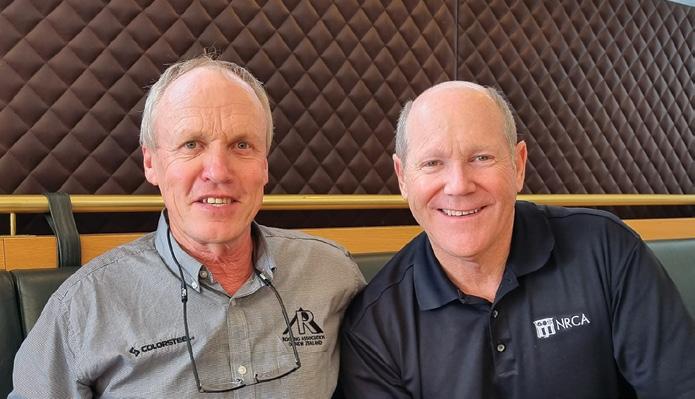
Cyclone Gabrielle is adding more damage to the upper North Island as I write this, just two weeks on from the Auckland Anniversary Weekend floods! Problems and damage have varied within regions, from minor roof leaks to houses no longer fit for living, road closures, and significant power outages.
Plenty of you are inundated with repair work, and the RANZ office has seen a flurry of calls looking for roofing companies. Hopefully, you, your families, your businesses and your property have come through reasonably unscathed.
It will take weeks to months to ascertain and manage the property and roofing work. No doubt, some of our Christchurch members will be well aware of the repair circumstances coming up for North Islanders.

Reid was great to connect with. The problems we see happening in NZ are similar to those experienced in the American market, albeit on a different scale. They are short tens of thousands of workers; they also battle legislation and have supply-chain issues. They work in a more litigious environment, and health and safety are more about fines when things go wrong. We seem more advanced with the controls that we have in place.
Reid is a former Republican Congressman. Even though he was a Republican, he was not in Trump’s camp. He told me that their economy is awash with money, as they also saw money being used to reignite the economy with little consideration given to consequences – high inflation? Sound familiar?
The NRCA is a huge trade association. Reid had a staff of 73, with three employed in
Washington DC, to lobby for the interests of the NRCA! In his last year with NRCA, he told me he was home for a total of just 60 nights. Quite a few RANZ members have been to their Expo, which is a must-attend, listening to those that have been there. The NRCA also has its own schools, where every aspect of the roofing industry is taught. Business degrees, all types of staff training, and trade qualifications are all available through the Association – the things you can do with scale!
RoofLink is again full of great articles. On p25, you can read about how Harkin Roofing completed the impressive APL building in Cambridge, the scale of which is quite something. But more important is what this building contributes from a sustainability perspective. We also have an article from the Construction Sector Accord on sustainability. We need to understand better what it means and how to contribute to this key area. We have an article on the CCA and how simple it is to use, and I have provided an article on complaints. There’s an update on the upcoming RANZ Conference, too. Keep it safe out there. Graham.
5 Issue 104 • Autumn 2023
FROM THE CEO
RANZ CONFERENCE 27 & 28 JULY 2023 / AGM 26 JULY 4PM SEE YOU IN WHAKATŪ NELSON FOR THE Trade show Awards Networking Business sessions Interactive industry update sessions
Get your entries in!
The deadline is fast approaching for entries into this year’s RANZ Awards. Categories include Residential and Commercial Roof of the Year, Trainee and Training Company of the Year, Young Roofer, and the coveted Roofing Excellence Awards. For full details of dates and criteria, turn to page 12 of this issue, or go to ranz.co.nz/awards. Good luck!
ACC asbestos update
WorkSafe has become aware of several incidents where external cladding containing asbestos has been cleaned using high-pressure water blasting in preparation for painting. In response, they have asked RANZ to remind our members to check a building, roof or structure to determine if asbestos is present before commencing work.

If asbestos is present, soft-wash systems must be employed so as not to abrade or damage the asbestos and generate airborne fibres that, when inhaled, can cause health issues, such as cancers. Using high-pressure water on asbestoscontaining material breaches the Health and Safety at Work (Asbestos) Regulations 2016 and may result in enforcement action being taken by WorkSafe.
The presence of asbestos in roofing products may occur in some older, textured metal tiles. RANZ has produced guidance on asbestos and non-asbestos textured metal tiles and whether a test is required. This WorkSaferecognised reference document is available in the RANZ Member Toolkit: ranz.co.nz/assets/Uploads/MemberToolkit/Technical/RANZ-ACM-Flyer.pdf
New tech to watch
Wellington high-rise building cleaners are taking their craft to the next level. Summit Building Wash has developed a machine that does the job safer, faster, cheaper and more sustainably. The prototype has been five years in the making, says Summit Building Wash founder Ray Tomlinson.


“The idea of having abseilers hanging off the side of buildings to wash buildings – I thought there must be a better way of doing it,” says Tomlinson. “We can now wash a building the size of the Wellington airport building in a day. Normally that would take nine abseilers to do what we can in one day.”
The machine, powered by rechargeable batteries, uses rotating brushes as it’s moved up and down by a winch system. It also reduces water usage by about 85%, and there’s no need to use chemicals.
The prototype will continue washing buildings in the capital and Auckland before the finalised machine goes to market early next year.
Team wellbeing challenges on
Corporate health coach Matt Vaughan has been supporting workplace wellbeing with a number of our RANZ Member teams (also including G&S Roofing, CS Roofing Canterbury and MJ Roofing and Cladding) with some impactful, practical approaches.
“At Graham Hill Roofing we have even started a workplace wellbeing challenge measuring the team’s average metabolic age. The GHR team’s management stepped up first and the rest of the group followed suit. Team building can be educational and a game changer when done correctly. We could easily work out the team’s average metabolic age from there, and now with that data we are getting to work to start to change the environment around the workplace to help reduce the average metabolic age, as a team. We focus on simple things - around what foods to eat on the run, or how much hydration and sleep matters - which add up to be big factors in how the team turns up every day. Recovery is never given enough time or effort when it comes to looking after yourself both physically and mentally. Getting home safely after a massive day on the job comes into all of this, so recovery is the key to group productivity," says coach Matt.
More info can be found on Matt’s wellbeing and corporate health courses at www.mvcorporatehealth.com – with 15% RANZ Member Discount.
6 Autumn 2023 • Issue 104
FROM THE ROOFTOPS
More reasons to work with certified SARNZ Members
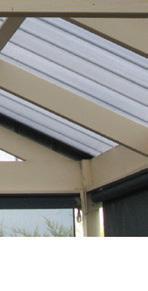

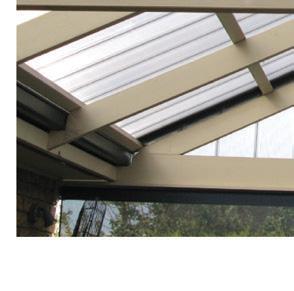





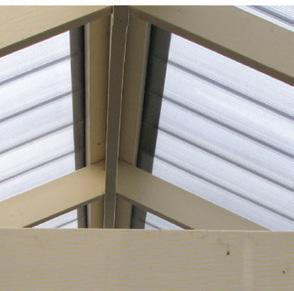




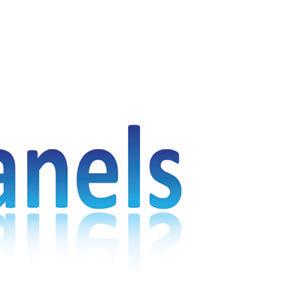

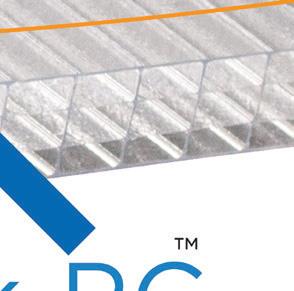
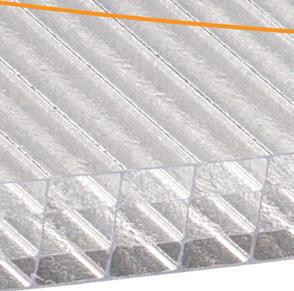

Scaffolding, Access and Rigging New Zealand Inc (SARNZ) is pleased to announce that it has achieved ISO 9001 certification for its quality management system. This certification demonstrates its commitment to providing our members and stakeholders with high-quality services.

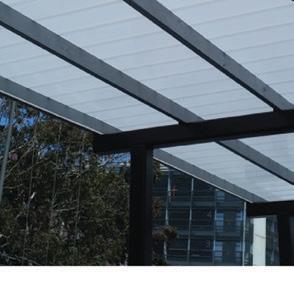
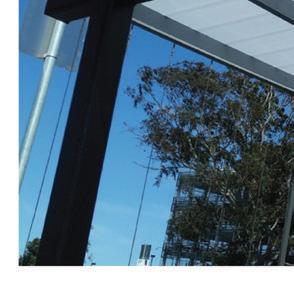

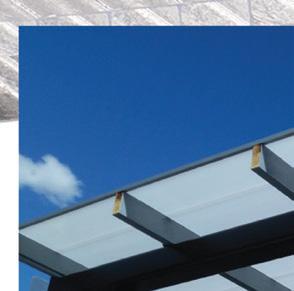



ISO 9001 is an internationally recognised standard that sets out the requirements for a quality management system. It helps organisations to consistently meet customer and stakeholder needs while improving internal processes and reducing risks. Achieving ISO 9001 certification is a significant accomplishment for SARNZ, and we are proud to have met the standard’s requirements.

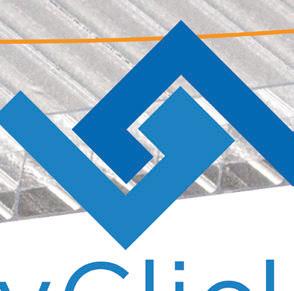





“This is an excellent step for us, and we have learnt much about how we operate as an association and how we see ourselves being placed in the future. We are committed to providing exceptional service and strongly encourage continual betterment for all of our members, so only right we are leading by example”, says SARNZ CEO Tina Wieczorek.

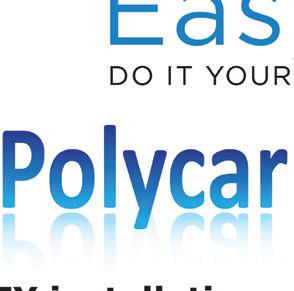
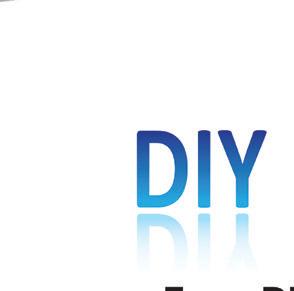
SARNZ is a leading association for Scaffolding, Access and Rigging in New Zealand. It provides services from the regulatory issuing of Certificates of Competence to delivering networking opportunities, professional development, and advocacy for its members. For more information, please visit www.sarnz.co.nz.
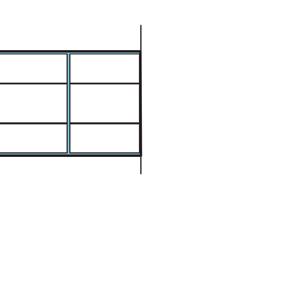
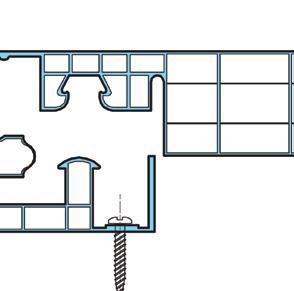
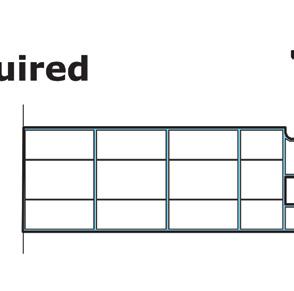

7 Issue 104 • Autumn 2023 Do you have some news or an interesting project you'd like to share? Please email editor@ranz.co.nz . We'd love to hear from you! Clear, Opal, Grey 2.0, 2.5, 3.0, 3.5, 4.0, 4.5, 5.0, 5.5 Width 250mm Light Transmission Clear - 80%, Opal - 50%, Grey - 40% SHEET INFORMATION To request a colour sample freephone 0800 267 354
RANZ CONFERENCE
27-28 JULY 2023 / AGM 26 JULY
TRAFALGAR CENTRE – WHAKATŪ NELSON
Join fellow RANZ members at the Trafalgar Centre in sunny Nelson for business, networking and entertainment.


WEDNESDAY 26 JULY – AGM, LATE AFTERNOON
RUTHERFORD HOTEL, NELSON
THURSDAY 27 JULY – DAY 1 – TRADE EXPO / SPEAKERS / DINNER
TRAFALGAR CENTRE AND RUTHERFORD HOTEL, NELSON
FRIDAY 28 JULY– DAY 2 – TRADE EXPO / SPEAKERS
TRAFALGAR CENTRE, NELSON
BOOK NOW!
PLAN AHEAD AND BOOK THE DATES IN YOUR DIARY
BOOK YOUR ACCOMMODATION NOW
booking details opposite page, with registration packs being sent out soon from April.
See
RANZ Conference 2023 Trafalgar Centre, Nelson
The 29th RANZ Conference will be held at the Trafalgar Centre in Nelson, with the AGM, Conference Dinner & Awards, and live Roofing skills competition at the nearby Rutherford Hotel.

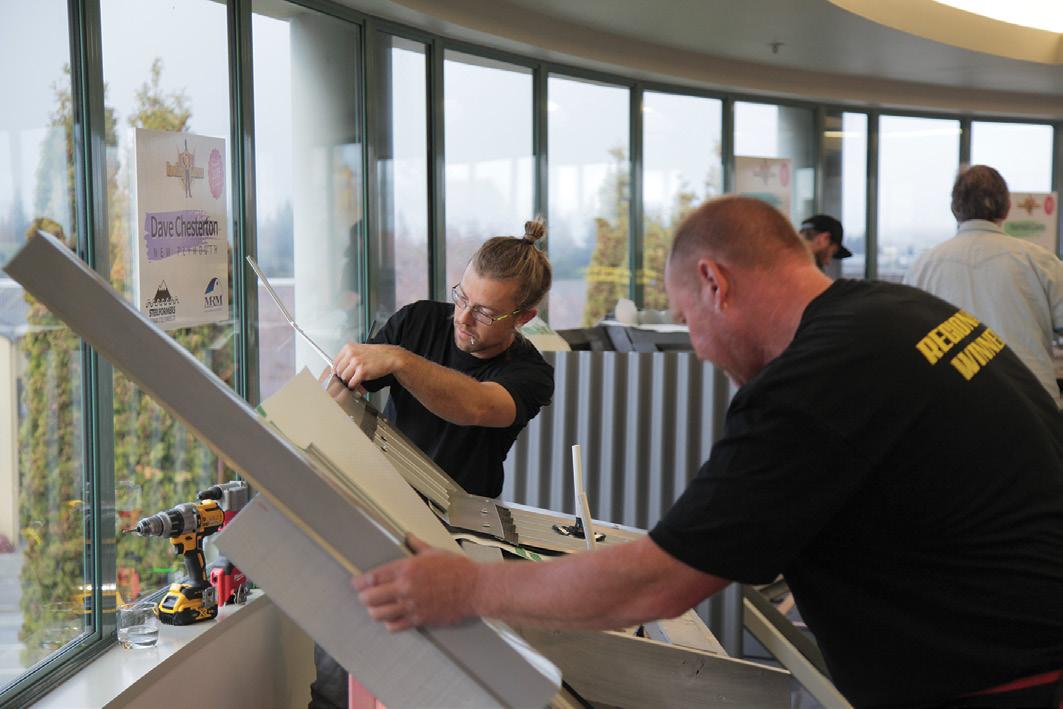
This year we have Mel Homer as our MC conference host for both conference days and at our RANZ Awards at the conference dinner. Mel is both a sharp journalist and an entertaining tv/radio character (TV3, Radio Hauraki, and many more).



Industry leaders will provide keynotes, then open up the floor to questions and discussions via the conference app – including:
• Rick Herd, CE of Naylor Love Construction

• Graham Burke, People Transformation Lead of the Construction Accord

• Peter Degerholm, Construction Contracts Law Expert
• Luke Kemeys, online sensation for relatable, straight-talking business and financial advice
• and more.
We’ll have none other than New Zealand’s own Hilary Barry as our closing keynote speaker, to send us off into 2023/24 with her down-toearth, comedic, and contagiously positive outlook.

Thursday afternoon will also see the finals of our new initiative where selected roofers from various strands try to be crowned the best in their field, showing off their skills live, amongst the pre-dinner drinks and canapes onsite at the Rutherford Hotel. Conference dinner at the Rutherford will again feature the RANZ Awards 2023, celebrating our outstanding roofing achievements together in style. And we’ll have after-dinner entertainment – from one of our own, Mr Darran Lees –comedian.
Registrations will be open in April 2023.
RANZ 2023 Conference accommodation options
The RANZ 2023 Conference (27th & 28th July, RANZ AGM 26th July) will be in Nelson this year – for the first time! The Trade Expo will be at the Trafalgar Centre, with the Conference Dinner hosted at the Rutherford Hotel (stay tuned for further details).
Please see accommodation options for you below:
The Rutherford
The block code for the Rutherford, RANZ delegates is: #721701 $205.00 room only. NB: Breakfast is an additional charge.
Reservation Contact: Jass Bhatti
Phone: +64 3 546 3000 Email: reservations@rutherfordhotel.co.nz
Tides Hotel
4 star PLUS hotel - central city on the banks of the Maitai River. www.tideshotel.co.nz
Delorenzos Studio Apartments
5 star Studio apartments - central City opposite Tides Hotel. www.delorenzos.co.nz
The Hotel Nelson www.thehotelnelson.co.nz
Chelsea Park www.chelseapark.co.nz
9 Issue 104 • Autumn 2023 RANZ CONFERENCE 2023
HILARY BARRY GRAHAM BURKE MEL HOMER
RICK HERD LUKE KEMEYS PETER DEGERHOLM
Live roofing competition with pre-dinner refreshments
Trafalgar Centre, Nelson

Exoskeleton trial results
Extracts from the final report on the recent exoskeleton trial by Chris Polaczuk and his team at Construction Health & Safety NZ (CHASNZ).


Details of why, where and how this trial took place can be found in the summer (previous) issue of RoofLink. In short, RANZ partnered with Construction Health and Safety New Zealand (CHASNZ) to form the Roofing MSD Taskforce, with a mission statement, ‘to improve the musculoskeletal well-being and productivity of the Roofing workforce through industry collaboration, establishing best practice and using innovation’.
This small-scale workplace pilot, which took place late last year, aimed to trial the Exxovantage HAPO back exoskeleton for its potential to reduce the adverse effects of a prolonged stooped posture when roofing. Three roofers trialled the exoskeleton at various building sites and on different pitched roofs over a one-week period. The trial employed a participative ergonomics approach, allowing the participants to contribute suggestions and guide the direction of the research. Data was collected in two stages; phase one was the collection of objective metrics through a Firstbeat heart measurement device. Phase two was the collection of subjective data through an online survey and a final group evaluation session.
Phase One
Even though the sample size was very small (i.e. three roofers), on average, the trial found substantial physiological improvements when the participants wore the exoskeleton compared to when they were not.
In addition, participants slept longer during the exoskeleton period, by 39 minutes, while the quality of sleep improved. This could be due to less stress and load during the day from wearing the exoskeleton, as this is, in theory, the only variable that changed during the trial.
Phase Two
Overall, participants agreed that using the exoskeleton reduced fatigue, musculoskeletal discomfort, pain, and injury. One participant commented that it positively impacted lower back, shoulder, and arm strain and aided in lifting heavy objects, like 40-45kg rolls from the ground to the shoulder.
When asked which roofing tasks it was suitable for, participants responded with screwing off, welding, lifting, rolling, and any task that required time spent on the knees or two-handed tasks that required arm extension. Conversely, when asked which roofing tasks were unsuitable, participants responded with marking sheets on the ground or working in confined or restricted areas, as it limited movement.
The overall consensus was that the participants either didn’t or wouldn’t want to wear the exoskeleton all day. The reasons for this included discomfort and incompatibility with their other gear or tasks – particularly with tool belts or trouser holsters, as it restricted access to their tools.
continued on page 13
11 Issue 104 • Autumn 2023
HEALTH & SAFETY
RANZ Awards 2023
GET YOUR ENTRIES IN BY 30 APRIL FOR:
– RESIDENTIAL ROOF OF THE YEAR
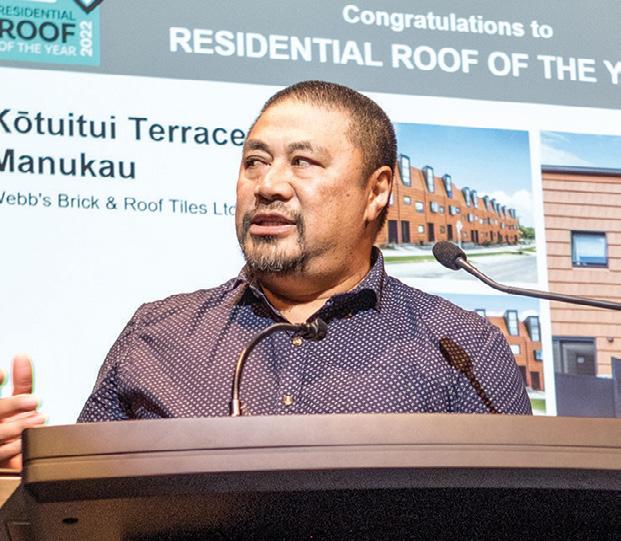
– COMMERCIAL ROOF OF THE YEAR
– YOUNG ROOFER EXCELLENCE AWARD
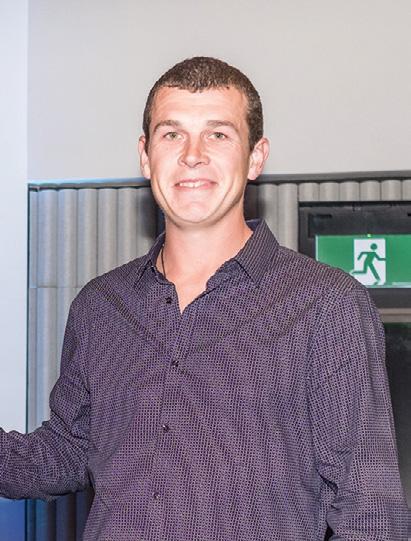



– TRAINEE OF THE YEAR
– TRAINING COMPANY OF THE YEAR
– ROOFING EXCELLENCE AWARD – entries in by 31 March
RANZ Awards will be presented at the RANZ Conference 2023.
Closing dates: Roofing Excellence Award – 31 March 2023
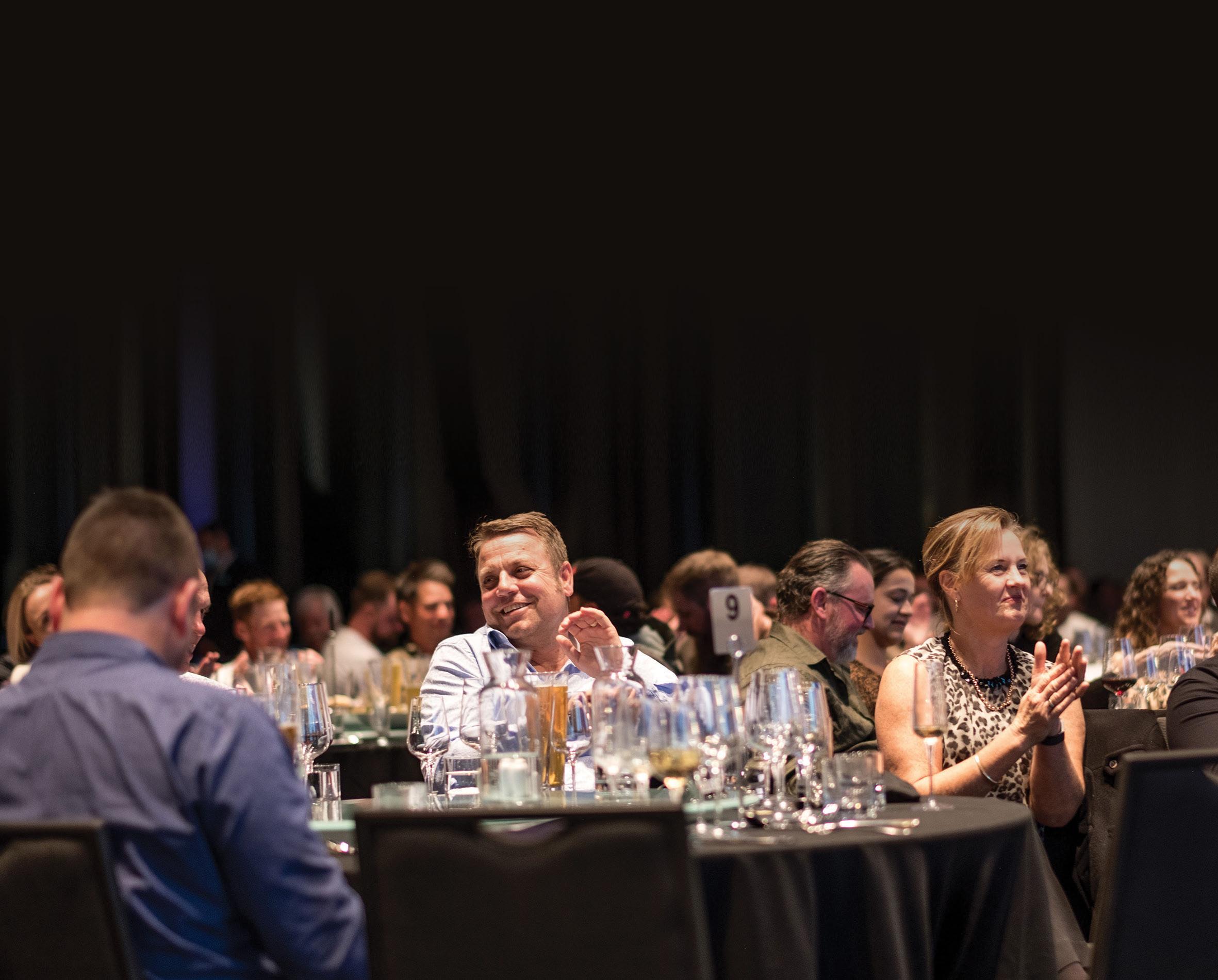
Other awards – 30 April 2023
For details and to enter go to ranz.co.nz/awards
RANZ AWARD CEREMONY 2023 TO BE AT RANZ CONFERENCE DINNER
2023 2023 2023 2023 2023
continued from page 11
Potential risks from using the exoskeleton included movement restriction, getting caught on things due to the bulk of the suit, and affected balance. Other concerns with the exoskeleton included durability, with one participant worried that specific residential roofing tasks, like re-roofing, could damage the suit. Stemming from this issue, the participant suggested that the exoskeleton could be more appropriate for commercial roofers.
When asked if overall they found using the exoskeleton beneficial when roofing, one participant strongly agreed, one agreed, and one neither agreed nor disagreed. When asked if the exoskeleton could prolong their roofing career, one participant strongly agreed, one agreed, and one neither agreed nor disagreed.

Participants identified brick and block layers, carpet layers, vinyl and tile layers, and any other role that requires work on their knees, two hands, and extension as potentially benefiting from using the exoskeleton.
How could the HAPO back exoskeleton be improved? Participants suggested slimming it down around the legs, making it less bulky, and an integrated system between the exoskeleton and PPE, like Snickers floor-layer trousers.
It was noted during the end-of-trial workshop that the winter weather negatively affected their ability to work and, therefore, trial the exoskeleton. Participants’ work schedules also negatively affected
their ability to trial the exoskeleton. To address the weather and workload restraints, it was recommended that another trial be conducted within the summer months, enabling the use of the exoskeleton over more extended work periods and reducing the time it takes to complete the trial.
While this trial was running, Exxovantage had also been developing the ‘Exosuit’ that does not have an external framework, which the roofers had said could potentially get caught on scaffolding, affect your balance, and have to fit around a toolbelt and harness. Our roofers had the chance to wear the new ‘Exosuit’ at the end-of-trial workshop and strongly recommended that these are used in the next trial. Such a trial could also confirm the results seen by this trial, thus ensuring its validity and reliability whilst also enabling some of the recommended improvements to the exoskeleton and its use to be made. Watch this space.
Acknowledgements
This research trial is being made possible by the support of Arnaud Daurat from Exxovantage. A big thank you to Jenny Maxwell, HSE Manager at CS Roofing Canterbury, and Paul Stanley-Boden from Red & Black Roofing Co Ltd. We especially want to thank the three roofers who agreed to participate in this trial. We hope it will make a difference to the aches and pains prevalent in the industry.
13 Issue 104 • Autumn 2023 HEALTH & SAFETY
"Overall, participants agreed that using the exoskeleton reduced fatigue, musculoskeletal discomfort, pain, and injury."
CCA – use it for all your customers
The CCA was introduced in 2002 and should be considered as essential to the day-to-day running of your business as any installation tool required to complete site work. And yet here we are, en masse, two decades later, still not using one of the best tools available.
The protection of payment afforded by correctly using the CCA and its functions are wide-reaching and backed by NZ laws. Obviously, its use doesn’t ‘guarantee’ payment, but when coupled with a robust due diligence process around the businesses and/or individuals you choose to enter into contractual arrangements with, it becomes an extremely powerful weapon to ensure timely payment – the RANZ website contains assistance for understanding and checking credit worthiness.
It is not enough to arbitrarily state, ‘this is a payment claim under the Construction Contracts Act 2002’, or something similar, on an invoice or in the T&C section of a quote or contract. Understanding the fundamental parameters required to satisfy the law is paramount. And it is this understanding, or lack of, that invariably results in negative outcomes.
Simply – and backed by law – you can set expectations about how you will claim and when you will be paid. If your payer does not comply by the due date, using the methods outlined below, then the debt is absolutely beyond dispute. Case law has seen the payer having to front for the debt and, at times, costs.
There are options and remedies available if you have been procedurally correct. While you are within your rights to stop work under the Act if non-payment has occurred, the other option is to seek adjudication. This has statutory time limits, is low cost, binding and enforceable. The adjudication process works on the ‘pay first, argue later principle’. You can also get a decision with or without the payer’s participation.
Follow the simple process
A few basic administrative requirements must be followed, or the Act, and the protection it is intended to afford, will not be available when tested in a court of law.
The mandatory requirements of your payment claim are it must:
• Be in writing
• Identify the construction contract
• Identify the construction work
• Clearly state a claimed amount
• Show the correct due date for payment
• Show how the claimed amount has been calculated (e.g. percentage of contract completed)
• State that it is made under the Act, i.e. This is a payment claim under the Construction Contracts Act 2002
• Be accompanied by Form 1 notice to the payer
• Be served at the relevant interval; default interval under s17(2) is monthly
Be accurate
As you would expect, the court is bound by a strict process. If any of the above elements are excluded or included incorrectly, the mechanisms that exist under the act will not be available. However, it is a straightforward process with clearly laid-out steps. With some understanding and a little effort to develop a template, it is a simple rinse-and-repeat process to compile and deliver payment claims.
There is also a process for the payer to follow – particularly if they disagree with the claim and do not intend to pay the full amount. The payer must submit a payment schedule if they dispute any part of the payment claim or its calculation. It is worth noting many would send a payment schedule, regardless.
Like payment claims, there are mandatory requirements for payment schedules, and these are it must:
• Be in writing
• Identify the payment claim to which it relates
• Clearly state a scheduled amount
• Show the correct date for payment
• Have been issued by the due date
If the scheduled amount is less than the claimed amount, then it must:
• Show how the scheduled amount was calculated
• Show reasons for any difference between claimed and scheduled amounts
• Provide reasons for amounts withheld or deducted, e.g. retentions, remedial work
Good for residential, too
A widely touted misconception about the CCA is that it cannot be applied to residential building contracts. When originally introduced in 2002, residential work was indeed excluded from the Act. However, following amendments a few years ago, it is now included and should definitely be used. It’s not complicated. It is a powerful piece of
14 Autumn 2023 • Issue 104 CONSTRUCTION CONTRACTS ACT
Michael Sentch, Director of Project Unite & RANZ Executive Committee member, reminds us of the power afforded by the Construction Contracts Act (CCA).
legislation and, when used correctly, is almost irrefutable. Again, ample case law is already in place that adds weight to the process and highlights the power of using the act.
Another fallacy that continues to persist is around the ‘requirement’ for retentions. As with almost all parts of a contract, retentions are negotiable. No ‘security of payment’ is written into your contracts, so why can’t your customers place the same faith in you to complete the work – including any remediation requirements – that you put in them to pay the bill upon completion?
Crazy not to use it
Realistically, we hope the takeaway is that not using the CCA and adding its protection framework to your business is non-sensical. Many resources are available to the RANZ membership to help support and guide you on the correct formation and process.
Peter Degerholm has generously let us use Fig 8, ‘The Payment Process’ from his book The CCA Handbook – Making the Construction Contracts Act work. We are also fortunate to have Peter present at Conference – another great reason to come along (see p8-9). See you there.
Michael Sentch Director of Project Unite RANZ Executive Committee member

15 Issue 104 • Autumn 2023
Figure 8: The Payment Process
Payee may serve payment claim at intervals in contract s20(1), otherwise monthly s17(2)
Is payment claim valid?
amount
a debt
make take steps to enforce:
Suspend work s24
Take court action s23,24
Refer to adjudication s25(2)
Apply for charging order s29,30 s24
amount is a debt due s23 s20(2)
Payee may dispute about progress payments to adjudication s25(2) Scheduled
is
due Payee may re-serve claim, or must rely upon contractual payment mechanisms Payee
1.
2.
3.
4.
Claimed
Has payer provided valid payment schedule s21 by due date? s22(b)
amount
END Due date for payment – As contract s22(b) or 20 working days s18 YES YES YES YES NO NO NO NO
Payments Process
Has relevant amount been paid in full? Is scheduled
less than claimed amount?
The
New White Old Black
We’ve been using bituminous black building paper as a roof underlay in New Zealand for over 100 years. Now there’s a recyclable and affordable alternative. All new Covertek 215 is a versatile, synthetic roof underlay that has superior performance... and is easy on your pocket!

find out more, call 0800 806 595 or visit thermakraft.co.nz/215

Bituminous Paper Covertek 215 X Lower Environmental
100%
Manufacturing
X Superior Product
BRANZ
–
Water Vapour
–
X Strong and
Improved
and
–
Low
Cost-effective
To
Impact
Recyclable
Waste
Performance
Appraised
Improved
Permeability
Lightweight
Durable
Tear-Resistance
UV Resistance
Product Longevity
Cost
– Wider Rolls, Less Laps
Thermakraft products are brought to you by Kingspan Insulation NZ Ltd.
When it comes to roof underlay, the choice is black AND white!
Roofing leading the way
Sustainability Transformation Lead for the sector, Jennifer Taylor argues the case for a ‘circular economy’ in construction in order to reduce our collective impact on the environment.
The common saying, ‘as long as I have a roof over my head,’ shows just how highly valued a roof is. No mention of walls or floors in this old adage, but a roof is recognised as a key part of our basic human needs – it provides us with shelter. In the same way that a hat can shield us from the effects of the summer sun, protect us from wind, or keep us warm in winter, a roof is a critical part of a building. So how can we provide this need for shelter amongst climate change?
Merely weeks into 2023, Aotearoa New Zealand, has experienced severe flooding in the upper North Island, increased rainfall in the east, unexpected high temperatures down south, and even a tropical cyclone and a tornado. With climate change, we will no doubt see more unprecedented and unpredictable weather affecting greater numbers of people and structures throughout our country and with increasing frequency.
A circular economy
You may or may not have heard of the concept of a circular economy, but this is one way to consider our environmental impact and, therefore, our contribution to climate change as a sector.
A circular economy reduces material use, re-designs materials, products, and services to be less resource intensive, and re-captures ‘waste’ as a resource to manufacture new materials and products (US Environmental Protection Agency). For us, as businesses, it can be helpful to think of a circular economy as aligning with what we consider is a good business practice: the idea of doing the job right the first time, with the right materials, efficiently, with less waste – and recognising resources have value at the end of their life and need to be reused/ recycled where possible.
Roofing is leading the way

In this end-of-life phase, roofing is a superstar among our trades. Roofers have already recognised that rather than being ‘waste’, our old iron roofs and/or steel offcuts represent money left on the table. Did you know that around 85% of all steel from construction in New Zealand is currently being recycled? Collectively, as a trade, roofing has already applied circular thinking. Some of these resources could have been viewed as throw-away items, but instead, they have become of value.
Do you think climate change and its effects are outside your influence as a roofing professional? Well, they certainly are not. I can assure you that your continued help is needed to make a difference. As a starter, continue your efforts in recycling your metal and other materials – and keep a lookout for that remaining 15%!

Change is achievable for everyone
For each roof you visit and potentially quote, consider what your expertise tells you to offer rather than taking the specified item as definitive. Again, the best practice for your business will often be the best practice for a circular economy and climate change. No one knows roofs like you do. So, add your value to the conversation and educate your customers about what could be most suitable in their situation.
Here are some ideas and tips to consider:
• The durability of the products
What is the best product for the job? A more durable solution will require less product replacement over its lifetime, but also save resource (and carbon too).
continued on page 19
17 Issue 104 • Autumn 2023 SUSTAINABILITY
Steel & Tube can provide Environmental Choice accredited COLORSTEEL® roofing profiles for your project nationwide.
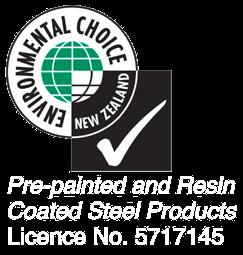
NATIONWIDE ROOFING SOLUTIONS


Nothing’s more important than the roof of a building. The style, quality, look, and installation ease all matters.

With 27 locations across New Zealand and six manufacturing sites, Steel & Tube can manufacture and supply roofing, cladding and rainwater to match every application. Select from our range of profiles, thicknesses, materials and finishes, ensuring the perfect match to your client’s expectations and budget.

If you’re after a roofing supplier with resilient distribution, a wide range of products, and expert advice, get in touch with our dedicated roofing team today.

steelandtube.co.nz 0800 427 663 BUY ONLINE
NELSON WELLINGTON WAIKATO/BOP AUCKLAND HAWKES
CHRISTCHURCH Follow us on
DUNEDIN TIMARU PALMERSTON NORTH NEW PLYMOUTH INVERCARGIL WHANGAREI
BAY
continued from page 17
• Preparing for the changes in the intensity of rainfall
Are there internal gutters in the design? Does the client understand the maintenance involved in clearing these? In heavy rain, could they overflow into the building? Could the design be altered to remove these, or at least position them over non-living areas? Should the gutters and downpipes be upsized?
• Increasing dry periods and emergency water supply
Over time, water will become more recognised as a valuable and scarce resource. Also, metering/charging will become more prevalent across New Zealand (and already is in many places).
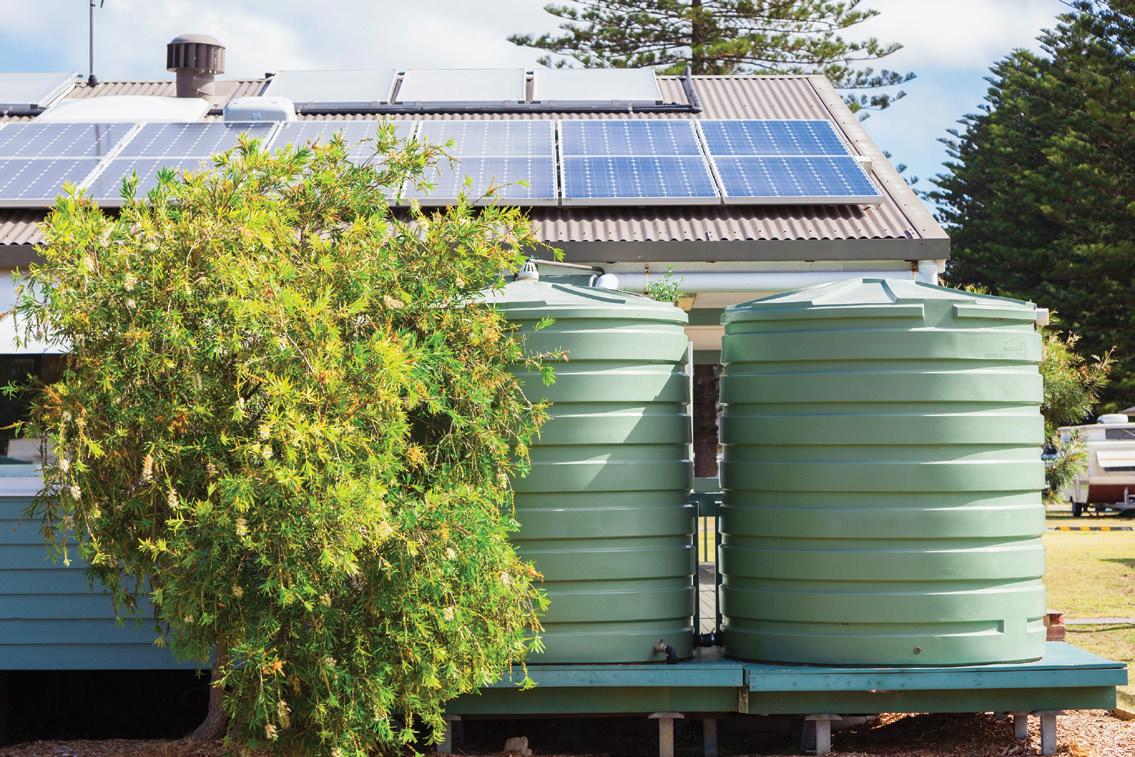
Consider whether a run-off system could be installed. Has the client thought about storage tanks, not only handy for the garden in dry periods but also as an emergency drinking supply in case of emergency? Ironically, the need for clean drinking water is often during times of too much rainfall, which means town-supply can become contaminated.
To learn more about water storage from roof run-off, check out this Build Magazine article: www.buildmagazine.org.nz/assets/Uploads/ Build-151-26-Build-Right-Collecting-Drinking-Water-From-Roofs.pdf
• Over-heating
Eaves are more than a style statement. They also help to reduce direct solar gain during the hottest months. Current trends show us that overheating in summer (particularly in new, highly insulated houses) will be a major issue in the future.
• Reduce heat gain
In hot, heat-wave-prone areas, make your clients aware of the potential impacts of dark colours on the overall surrounding temperature –particularly in hotter summers. Dark roofs are implicated in creating the urban heat island effect (hotter urban areas due to surfaces that absorb heat). In this situation, you could recommend cooler paint colours/types or a more insulated roof material.
• Energy production
If you work in sunny locations with north-facing faces on a roof, ask whether solar panels have been considered. With the cost of electricity forever increasing and the cost of PV (photovoltaic) technology decreasing, the economics is improving daily. Product design is also changing. For example, it is now possible to have roof profiles with wider ribs that fit solar panels.
• Go wild
Commercial buildings in high-density areas will likely see more ‘green roofs’ – living, planted spaces. With increased demand by commercial operators for Greenstar buildings and the desire for more sustainable buildings, the gold standard is a green roof. It is more expensive than a traditional option, in particular, due to the increased weight load. However, the benefits include reducing stormwater run-off by up to 65%, cooling the roof surface by 30-40% (a double bonus with reducing both energy use for cooling and the urban heat island effect), attracting wildlife, removing carbon dioxide to create oxygen, reduction of noise, an extension of the roof’s lifespan, and making the roof a useable, pleasant space.
A green roof may sound a little futuristic at this point, but due to the multitude of climate change benefits, it’s certainly worth keeping in mind.
• Re-roofing
In the case of a re-roof, does it actually need replacing? Could some well-placed repairs give the roof another five years and extend the life of that resource? It may seem counter-intuitive for your own business, but the honesty of providing an alternative view could see you performing the repairs and the re-roof in years to come.
I’m sure you can think of many more situations where you can use your knowledge and expertise to inform your clients about improved roofing solutions – to provide benefits for them and reduce the future impacts of climate change.
Keep up the great work, and remember – our actions will help our buildings be more resilient to the impacts of climate change and assist in seeing our sector progress.
Please let me know your ideas about how to continue roofing Aotearoa New Zealand better, applying circular economy principles. I look forward to hearing from you.
Jennifer Taylor Transformation Lead – Environment Construction Sector Accord www.linkedin.com/in/jennifer-taylor-b0b118169/

19 Issue 104 • Autumn 2023
SUSTAINABILITY
Ascent Roofing –setting sights high
A hard-working couple is reaping the benefits of a well-thought-out business plan and a passion for ensuring shingles don’t become a lost art.
BY JENNY BAIN
Nominated for RANZ Residential Roof of the Year in 2022, the owners of Ascent Roofing Ltd, Angel Apun and Jeff Santos, had no idea what was coming when they formed the company in September 2019. COVID could easily have delayed – or even ended their plans. Within months of launching the business, the country was plunged into COVIDinduced lockdown, creating a huge dose of uncertainty for businesses – particularly newly created ones!
Despite the challenges of a pandemic, Angel and Jeff’s new start-up demonstrated their ability to stay focused on their mission to offer service and to adapt. Their premises, leased in Eden Terrace in Central Auckland, had to go and, to a certain extent, COVID-19 re-shaped how the business would work. The virus re-shaped a new world of workfrom-home for all SMEs. It definitely wasn’t all plain sailing.
What probably helped the couple – partners in life and joint directors and owners of Ascent Roofing – was their previous experience running their own businesses back in the Philippines. Their ideas gestated over many months says Angel, who came to New Zealand in 2012 with a corporate and multi-national commercial background. Jeff had been in the country longer, arriving 15 years ago, having relinquished his ownership of an insurance company in Manila.

“We gave careful consideration to the merits of forming our own business,” says Angel, who met Jeff a year after starting a new life here and gaining residency in 2013. “Ascent Roofing was born out of our wish to be a provider of alternative roofing solutions – offering honesty, integrity, education, and excellent customer service. There is much a roofing company can provide to educate the homeowner on how to look after the roof and what maintenance is required.
At the time, Jeff was working as a project manager for a local roofing company and saw the opportunity to establish his own roofing venture with an emphasis on service. From being an installer/technician leading to project management – first with one company and then a second roofing entity, where many of his observations fed into the idea of being in business for himself – he’d seen a number of anomalies around QS issues and practices that did not align with his values, says Angel.
Specialising in shingles
Within the portfolio of roofing types offered by Ascent Roofing is the rather unique offering of timber shingles.
Jeff has taken a particular interest in timber shingles, some sourced in New Zealand, along with cedar shingles in Canada. Fortunately for Jeff, a veteran shingles specialist (who will remain anonymous) was the lead consultant on the recent restoration of the roof on the historic Panmure Cottage project (see image). There are just a handful of people with experience working with timber shingles, and the ongoing relationship with this veteran roofer has been invaluable.
Another significant timber shingle roof recently completed by Ascent Roofing is on a residence in Epsom – clearly visible from the motorway. There are few demands for timber shingles in New Zealand, despite the fact they are energy efficient and wind resistant. Angel says Ascent Roofing is determined to ensure roofing in timber shingles don’t become a lost art.
“With all prospective clients, Jeff digs into a lot of information that he can impart to the homeowner while weighing up the choice and suitability of material choice for their location, the structure of the house and what their vision is for the roof,” says Angel. “When a re-roof or a new roof is complete, it is standard practice for us to provide an after-sales service that includes an after-care pack and annual check-ins within the duration of their workmanship warranty.”
Supporting new, young roofers
Ascent Roofing has ten staff, including three administrative employees – one of whom is Angel – and two apprentices in their late teens, who were personal referrals and are in the VHNZ programme for National Certificate. Angel and Jeff are keen to see them succeed and recognise that not everyone leaving school is destined for academic life and that many of these young people are great with their hands and adapt well to a career installing roofing.
Jeff’s vision for these trainees is to instil in them a theoretical approach to learning – why things are done a certain way and now to achieve the best results. They are encouraged to complete tasks and meet deadlines. Jeff also rotates jobs, where possible, so he can explain what needs to be done and why. This approach aims to make the trainee a valuable contributor to the business by having an active and valued role in the Ascent roofing team.
20 Autumn 2023 • Issue 104 MEMBER PROFILE
Is this methodology working? “It’s all about attitude,” says Angel. “One trainee has definitely embraced Jeff’s vision for passing on knowledge and skilled ways of doing things. We train in theory and practice and ensure apprentices have a lot of hands-on experience to immerse them in the trade fully.”
Ascent’s marketing strategy is focused on a B2B (business to business) and B2C (business to consumer) approach – both traditional methods and digital promotion deployed – many leaflet drops in suburbs where re-roofing is happening along with links on Facebook, Builders Crack, Google and No Cowboys. Relationships with property managers have also proved beneficial when there is often a commercial incentive for managers to engage with Ascent Roofing.
RANZ membership
In 2021, Ascent Roofing became a member of RANZ, and to celebrate, a team of six, including Angel and Jeff, attended the conference in Wellington. This experience proved invaluable on many levels. “The conference benefited us, and we learned a lot as ‘infants’ in the industry. The networking with other members made us realise we all share the same challenges – it was reassuring to connect with others doing what we do.”
“We have learned that we are not alone and that there are opportunities to bring a fresh perspective to our role in the roofing industry. Establishing credibility in our field, having an industry organisation that backs us up and holds us to high standards means we are proud to be affiliated with RANZ when we do sales calls with clients.”
Away from the business, Jeff’s leisure-time passion is mountain biking, while Angel owns another business – a pop-up restaurant and selling
bottled Asian organic sauces, which she sells at farmers’ markets at Catalina Bay, Smales Farm and the Shared Collective at Oratia.
The stone cottage in Panmure – built between 1854 and 1857, has undergone a complete restoration, including replacing the wooden shingles on the roof. Ascent Roofing was commissioned to undertake the re-roof with cedar shingles, Blue label CC#1. The team’s careful craftsmanship, led by a timber shingles specialist with excellent project management and meticulous attention to detail by the whole team has ensured this historic building will continue to serve future generations for many years to come.

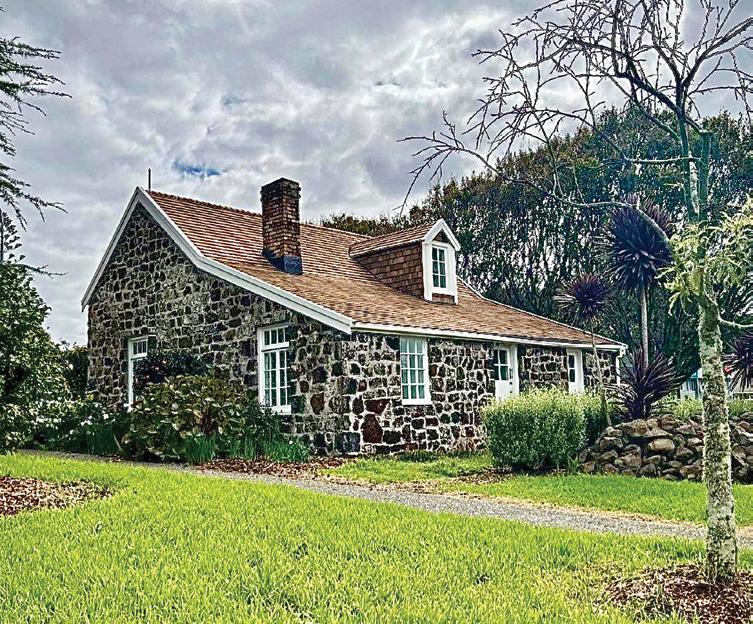
A family home in the heart of Takapuna has a new asphalt shingle roof – Oakridge pro laminated asphalt shingle – Onyx Black – installed by Ascent Roofing. From installing the titanium underlay to installing each shingle up to the finishing of flashings, this timeless and classic roof will stand the test of time for many years to come.
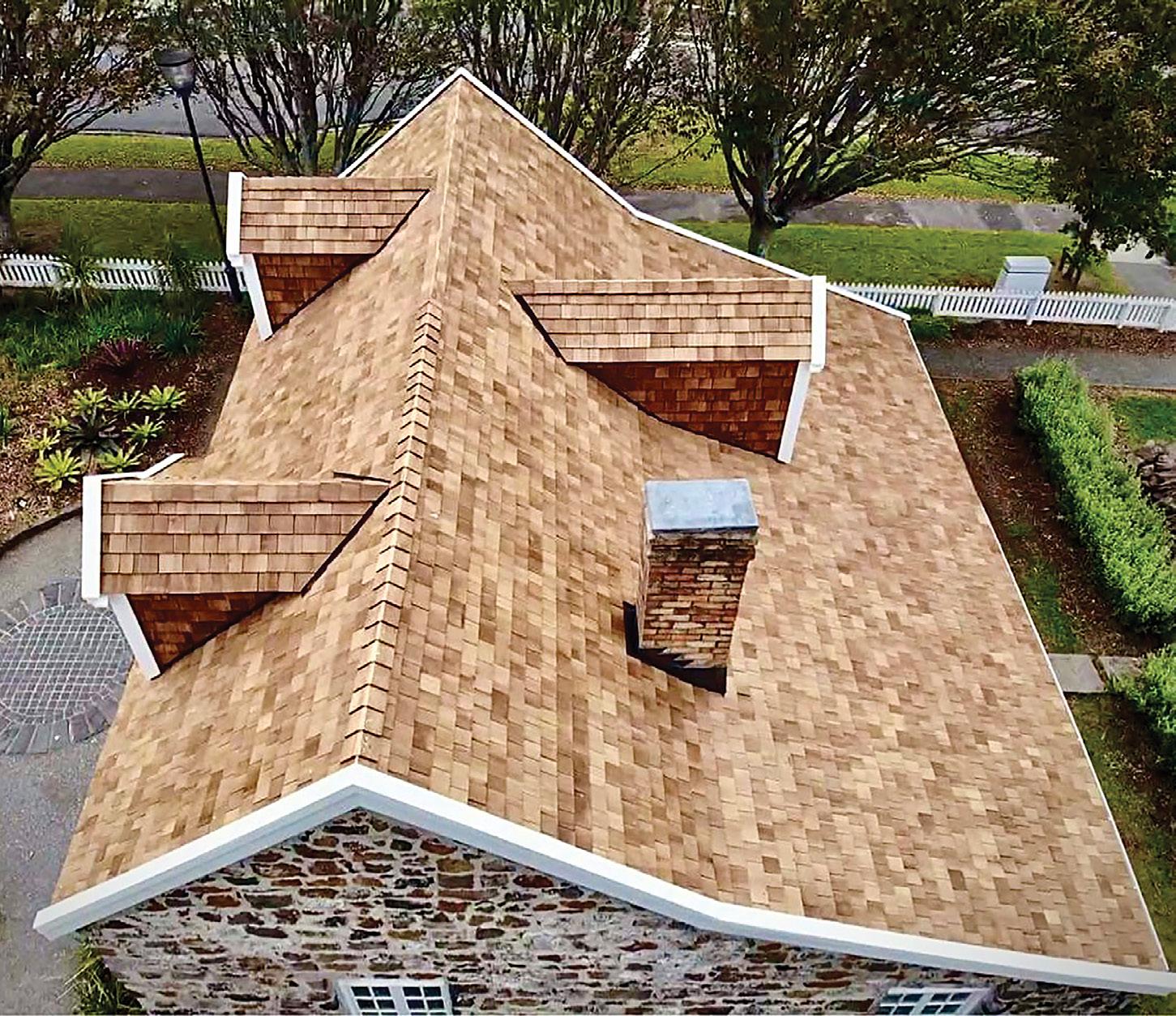
21 Issue 104 • Autumn 2023
"Establishing credibility in our field, having an industry organisation that backs us up and holds us to high standards means we are proud to be affiliated with RANZ when we do sales calls with clients.”
CALLING NEW ZEALAND’S BEST ROOFERS, DESIGNERS AND ARCHITECTS
For over 40 years, we have been creating high-quality steel from rich New Zealand ironsand. COLORSTEEL® turns metal into magic and, with your craftmanship, builds incredible structures. It’s now time to celebrate what we have created together.


Roofer of the Year | $10,000 Prize
New Roofer of the Year | $10,000 Prize
Residential Building of the Year | $10,000 Prize

Commercial Building of the Year | $10,000 Prize
And a special acknowledgement award for Service to Roofing, to recognise and celebrate those that have made a significant contribution to our industry.
ENTER & NOMINATE FROM 1 APRIL COLORSTEEL.CO.NZ/AWARDS
See you in Sunny Nelson for the upcoming RANZ Conference!
Wānaka

Queenstown
Ashburton
Timaru
Dunedin
Whangārei
Tauranga
Family owned since 1956
Wellington
Blenheim
Large-scale sustainability
The APL building, constructed over two years during the Pandemic, boasts the largest Kingspan roof in the Southern hemisphere. The KS1000 RW roof is an impressive 48,947 sqm (430m x 110m) and was completed in five months by the team at Harkin Roofing.
BY JOHN WILLIAMS
A key part of the brief given to architects Jasmax by APL for their new facility in Cambridge was the desire for it to be as sustainable as possible – and that included the building process. In response, the building was designed to achieve (and has since been awarded) a 5 Green Star NZ v3 Industrial Design rating. At the time of construction, just four buildings had been awarded this high standard of sustainability – and the APL building was the biggest by some way.
Nick Moyes, the design lead from Jasmax, says that the extra measures the building contractor Foster Construction took on the build to ensure that it achieved this high sustainability rating were outstanding – and this carried through to the installation of the
roof and cladding, which were undertaken by the team at Harkin Roofing, Tauranga.

The entire building was completed in Kingspan panels – the roof, the walls, and the cladding around the five huge skylights, says Deborah Harkin, Director at Harking Roofing. “It is the largest level of Kingspan [product] that Harkin has undertaken, with over 49,000 sqm of roofing – 58,000sqm if you include walls and cladding – making it the largest Kingspan roof in Australasia.”
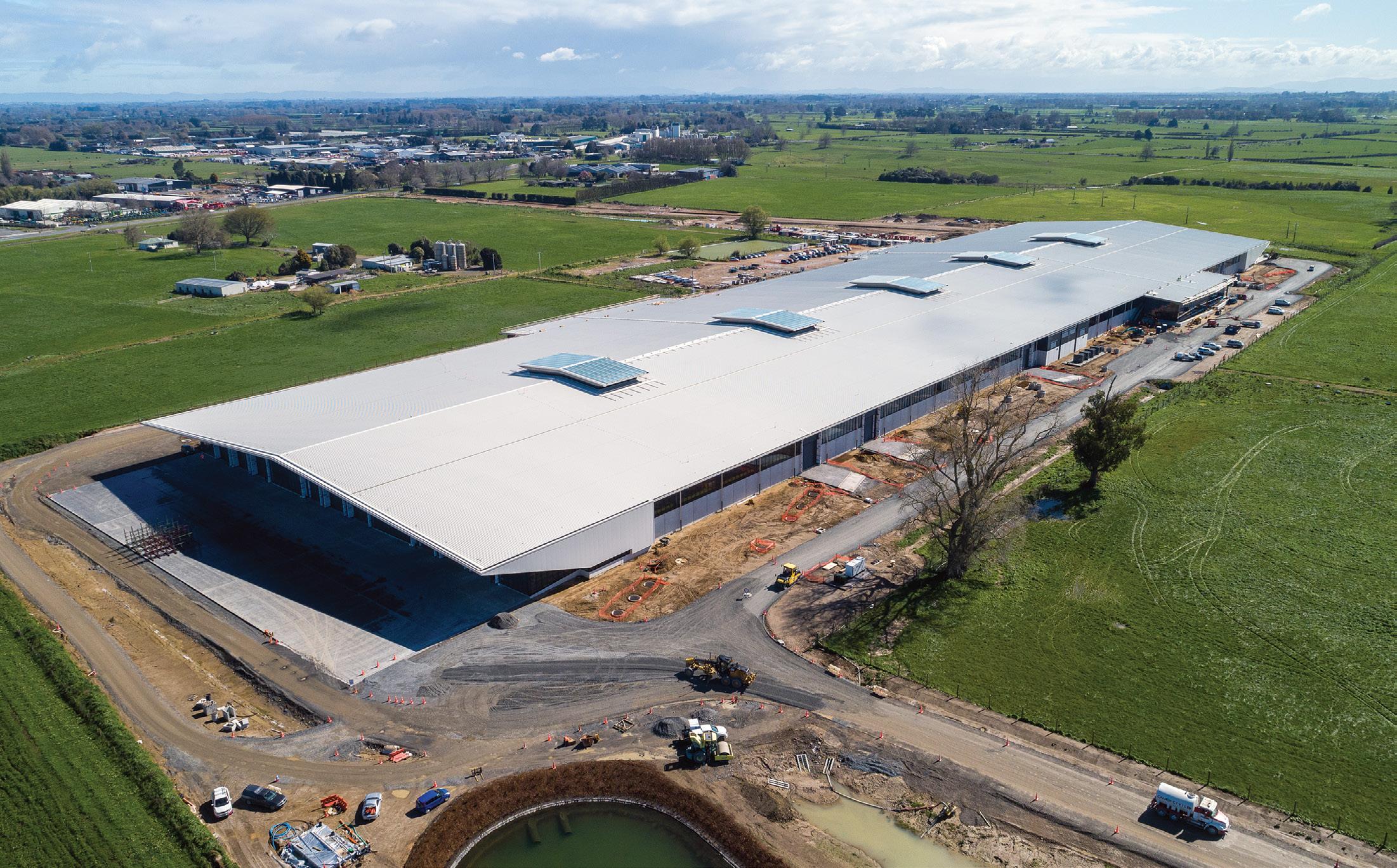
Not only is this building very large, but it is also exceptionally highly specced, which is unusual for a commercial project, says Harkin. “Normally, this level of scrutiny is only associated with residential homes, but the owner was very particular – he went over
every detail and every flashing with a fine-tooth comb.”
Efficient teamwork
Harkin’s team were on site for two years. At the peak of the contract, they had 20 employees on site, two cranes, a telehandler, and seven pieces of access equipment.
“We stuck with the same crew for the whole job, crane-laying the panels for extra efficiency. The boys had some great systems going and got very quick at laying the panels. They worked well as a team and got into a good rhythm,” says Harkin. “We also had a fantastic foreman on the job, Morgan Beveridge. He’s another level – young but very capable. He really took the pressure off the directors.”
continued on page 27
25 Issue 104 • Autumn 2023 COMMERCIAL PROJECT PROFILE
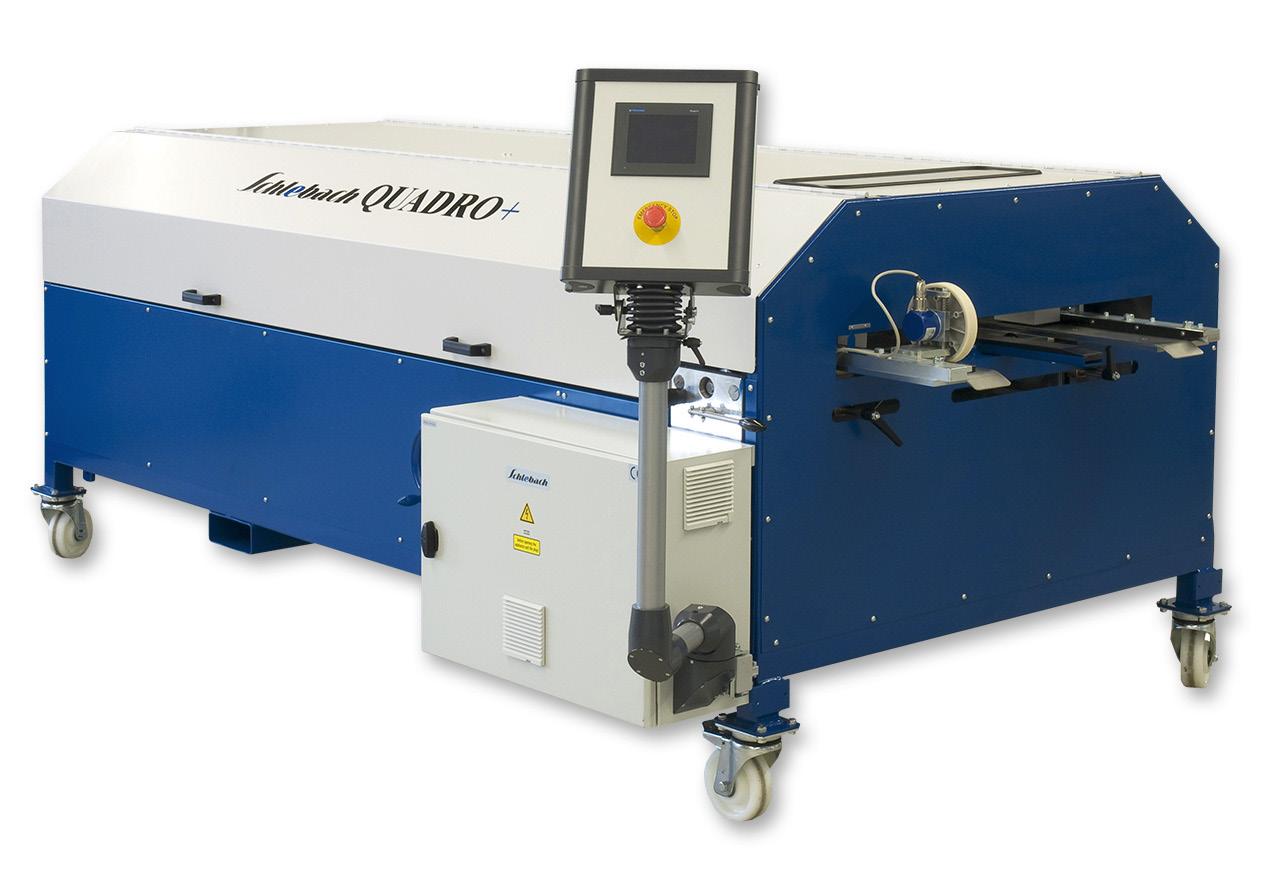


Come see us at AUSTECH 2023 in Melbourne! 09 - 12th May 2023, Melbourne Convention and Exhibition Centre, 1 Convention Centre Place, South Wharf, Melbourne, Australia SCHLEBACH QUADRO Multi-functional pro ling shaping system SLINET S 1.0 S 1.0 is the powerhouse in the category Slitting cut-to-length lines VARIOBEND - MODEL SERIES DB High-performance long-length bending machine tted with two folding beams Your chance to see automated bending, roll forming and slitting machines in action! We will have these machines on display at Stand #MT101 with Stamac Engineering. FRIBESCO LTD quotes@fribesco.com w w w.fribesco.co.nz | | | (09) 622 0107
continued from page 25
Planning and executing such a significant job in normal times is difficult enough, but this project was also hit by a substantial lockdown, plus all the associated disruptions.
“Surprisingly, the lockdown didn’t really disrupt us too much. There were restrictions around moving from region to region, but other than that, nothing significant,” says Harkin. “Because we were such a big job for Kingspan, they prioritised us, so supply chain wasn’t an issue. Brad [Harkin], who project managed this job, was very organised. He ensured things were brought in well before we needed them.”
Harkin says that the company is used to planning for and working on large-scale roofing jobs. “This one took less manpower than we first thought, mainly because Kingspan has such a good system. We absolutely love it. Our boys are used to it, and it’s so efficient, especially when you crane lay.”
Tough on wastage
Size aside, one of the main challenges on the job was adhering to the requirements laid down by Green Star. Fosters Construction were particularly focused on sustainability and minimising wastage, says Harkin, which added to the levels of scrutiny at every stage of the design and build.
“Every item brought onto site had to meet Green Star requirements. Everything we used – the Kingspan product, the sealants,
“Every item brought onto site had to meet Green Star requirements. Everything we used – the Kingspan product, the sealants, the membrane products, all had to meet the minimum Green Star rating, which we’d never had to do before."
the membrane products, all had to meet the minimum Green Star rating, which we’d never had to do before. We also had to note the quantities brought onto site and then record how much of that was removed as waste. Preferably, they [Fosters] didn’t want any waste.”
One of the more interesting quandaries the team had to deal with was what to do with all the protective polystyrene packaging that came with the Kingspan panels. The novel solution was to repurpose it to insulate the ground under the concrete floor slab, with any surplus taken off-site to insulate 50 local houses. Clever.
“Inevitably, we did have some wastage, as far as offcuts from panels, but we managed to pass on or sell on most of those for use on smaller projects. Also, at the end of the project, all the offcuts were brought back to the yard, and our team was offered them to use on their own projects,” says Harkin.
In total, over 90% of construction waste was diverted from landfill.
“As an industry, we need to improve, but it’s hard to find companies who repurpose the waste. For example, all panels, no matter what make, come wrapped in a protective, soft-plastic sheet. At the moment, all that plastic gets put in the bin. There’s no option available to us.”
Ensuring a good workspace
At over 100m wide, the roof is an essential element in providing natural light for the workers beneath – hence the five large skylights. These skylights reduce the need for artificial lighting and help ventilate the space, drawing in fresh air and extracting warm air during the summer months. The roof receives up to three million litres of rainwater per annum, which is drained to nearby ponds and wetlands via 190 downpipes. This rainwater provides a source for onsite sanitation and a firefighting resource if ever needed.
Great working relationship
“We’ve got a fantastic relationship with the construction company, Fosters – we love working with them. We’d done another large job with them before this one – Visy Packaging, which was 37,000 sqm – so we’d already shown then that we could take on a large project.”

Harkin says it was a great project to work on. Both Fosters and APL were super happy with the result, having exceeded expectations on the quality of workmanship and installation time.
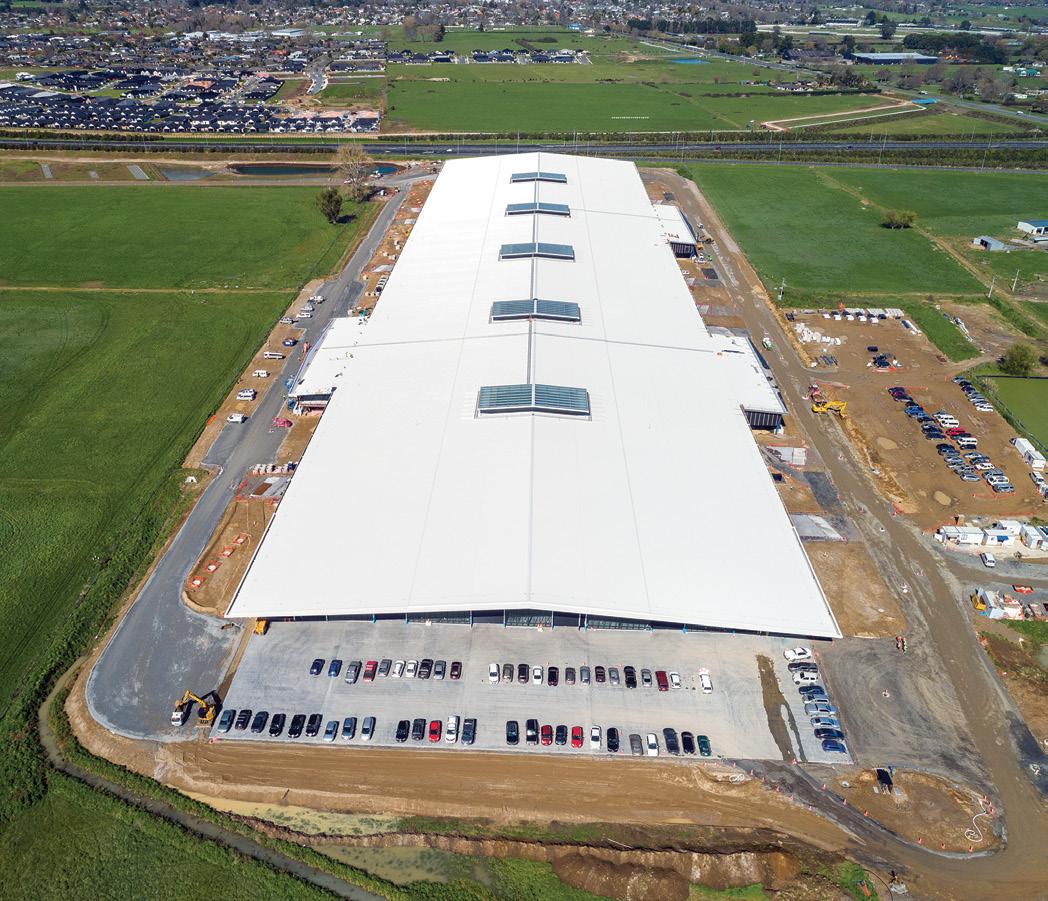
27 Issue 104 • Autumn 2023
COMMERCIAL PROJECT PROFILE
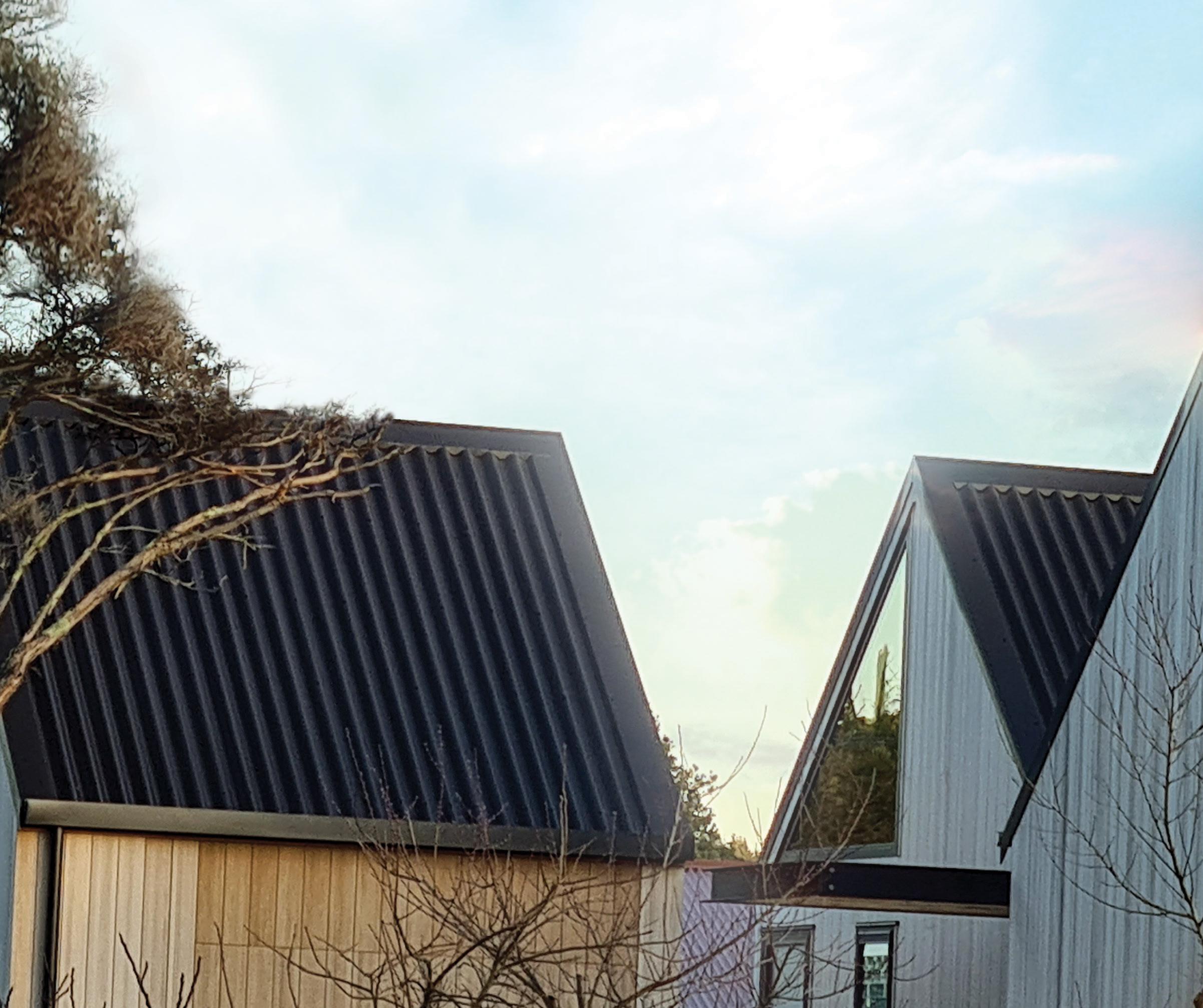

You’re no fraud
Inspirational speaker Jess Stuart gave a compelling presentation on Imposter Syndrome at last year’s RANZ Conference in Christchurch. For those who missed it, we thought it well worth repeating – here are the highlights.


Imposter syndrome is something Jess Stuart suffered from most of her early life – and she thought she was the only one. However, after 15 years of working with people in personal development and then running her own training and coaching business, it transpires that many others feel exactly the same.
“I spent most of my career doubting my abilities – and getting promotions didn’t seem to help,” she says. “I still felt like an imposter who’d be found out one day. The reality was I was good at my job, and even bigger jobs as the promotions came. But each new job would raise the same fear: I’m not sure I can do this.”
The same voice also told Jess that she’d never be a writer. “Who would read it apart from my mum? You’re not good enough, you’re not qualified, you can’t spell, and you don’t even have a degree.”
“It’s called imposter syndrome, and it’s much more common than we think. I thought it was only me, but every woman I speak to who confesses they feel it too also believes she is the only one! According to the Journal of Behavioural Science, 70% of people suffer from imposter syndrome.”
Imposter syndrome describes high-achieving individuals who are marked by an inability to internalize their accomplishments and a persistent fear of being exposed as a ‘fraud’. It’s that voice of self-doubt that, despite our successes, keeps us feeling like we might fail, we might not be good enough, and we might get found out.
Those with imposter syndrome tend to attribute their success to external factors – like luck or the work of the team. It takes courage to take on challenges and pursue dreams that leave you open to the risk of failure, falling short, losing face, and being ‘found out’.
What can we do about it?
Imposter syndrome is something Jess has learned to handle and to live alongside because it’s always there, she says. Sadly, it’s not something we can easily overcome – but we can learn to navigate through and succeed despite it. Here’s how:
1. Own your successes
You didn’t get lucky by chance. We tend to be modest when it comes to our achievements and have been brought up not to boast about our strengths. We feel uncomfortable accepting praise, and our negativity bias in our brain means we’re wired not to think of the positives so much.
I’ve found that keeping an achievement journal helps. I also have a folder on my computer where I file messages of praise and feedback to look back on when I’m having those moments of doubt. Remembering positive feedback from colleagues and friends helps, too, as it often carries more weight than when we praise ourselves.
The most important thing to remember is that if we get praise or positive feedback, it’s because we’ve earned and deserve it. Own it and let it help counter some of those moments of self-doubt.
In fact, let’s start now: write down your top three strengths. Why do people come to you, what do your colleagues at work value in you, and what do people tell you you’re good at?
2. Give it your all and know it’s enough
Sometimes our imposter syndrome is due to our fear of failure and our perfectionism manifesting all at once to give us this fear of not being good enough. We fail to meet our own unrealistic ideals of perfection – either in the way we look, our abilities in life, or our achievements at work. Perfectionism so often sets us up to fail and feeds these feelings of self-doubt.
Overcoming the imposter syndrome requires self-acceptance. You don’t have to attain perfection to be worthy of the success you’ve achieved. It’s not about lowering the bar; it’s about re-setting it to a realistic level. You don’t have to be Einstein to be a valuable asset or worthy of love. Nor do you have to attain perfection to share something with the world.
continued on page 31
29 Issue 104 • Autumn 2023 NZ WOMEN IN ROOFING
EDUCATION | MENTORING NETWORKING | RECRUITMENT

Appraisal No.1089 [2020]
continued from page 29
3.
Don’t let your doubt and fear stop you
We need to continue to take risks and challenges, even though we might not think we’re ready – especially women. Too often, we stand back and let the opportunities pass us by because we doubt our capabilities. The best way to see if you’re ready is to dive in and take on the challenge!
There will always be a feeling of fear and the risk of failure – we grow and develop by facing these fears and getting outside our comfort zone. Don’t let your worries hold you back. I’d often use the ‘fake it till you make it’ technique to overcome these feelings of fear and doubt when I took on new challenges. I’d act and dress confidently, so I at least looked the part and took comfort in the fact no one else could see what was going on in my head.
4. Remember: your thoughts are not common knowledge
I know how it feels to be gripped by imposter syndrome – we spend all our energy trying to prove our worth to everyone else to make it go away. The funny thing is, only we believe that we’re not capable. For example, we wouldn’t have been offered the job if people didn’t think we were capable. The only person we need to prove anything to is ourselves.
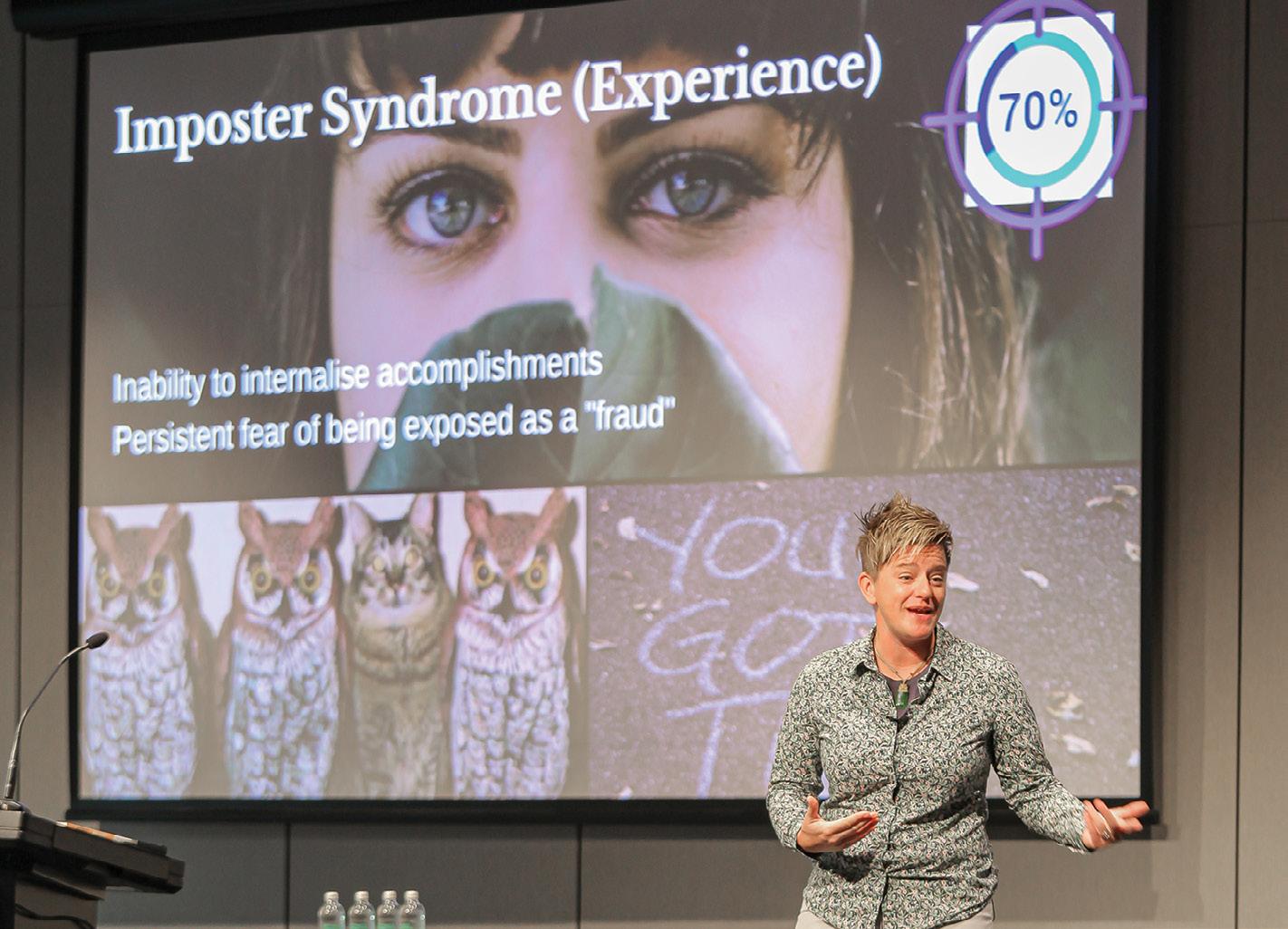
5. Acknowledge
it and know it’s not just you
We need to be mindful that the voice in our head is often swayed. We are wired to see the glass as half empty, to focus on the negative. This comes from evolutionary times when it was helpful for us always to see the worst that could happen in order to survive. In the days of cavemen and women, it was useful to be wary of a sabre-toothed tiger around the corner because then we’d be prepared to run.
What this can translate to in our modern world is a constant focus on what we’re not good at, things that went wrong, why we’re not enough (in our jobs), how we look compared to our friends, who we are as a person, or what we’ve achieved in life.
This negativity bias can leave us feeling like we’ll never be good enough. So, to counter the bias, we need to focus on what we have, not
what we haven’t, to direct our energy toward the things we’re good at rather than on what might go wrong and where we might fail.
Know that it’s not something we experience alone. Some of the most successful people I know who seem to have mastered life admit that underneath, they feel the opposite some days. Even famous people earning millions and excelling at what they do admit to having moments of self-doubt.
6. Stop comparing yourself to others
It’s the fastest way to feel inferior and feed our self-doubt. Unfortunately, there will always be someone more beautiful, clever, talented, or stronger than you. But the reverse is also true. At times, you will be the most talented and successful. So instead of comparing yourself to others, look to see if you’re fulfilling your own potential and celebrate the things you have.
We are all capable of more than we know and can do amazing things if we’re not busy doubting our abilities. Next time that negative voice in your head starts to speak, turn down the volume.
What matters most is not whether we fear failing, looking foolish, or not being enough; it’s whether we give those fears the power to keep us from taking the actions needed to achieve our goals.
Read more about Jess Stuart and her work: www.jessstuart.co.nz
NZWiR will be hosting a breakfast seminar again at the upcoming RANZ 2023 Annual Conference, 27 & 28 July 2023, in beautiful Nelson
Stay
31 Issue 104 • Autumn 2023
and
packs out
tuned for the RANZ 2023 Conference programme
registration
soon
WOMEN IN ROOFING
NZ

sed ®
Learning from complaints
RANZ CEO Graham Moor highlights the common topics of NZ roofing's customer complaints the Association receives – and what we can learn from them.
The RANZ office fields numerous calls and email enquiries in any given week. These cover everything from industry training, technical, health-and-safety, consumer law, referrals, membership assistance, and RoofLink® enquiries; and roofing complaints from the NZ public. Complaints are many and varied – and the majority are about nonmembers. However, there are some about members from their clients. Complaints have common themes and usually a couple of standard responses. The general themes are communication, timeliness, workmanship, empathy, supervision and professionalism.
Communication
The number of complainants that state that there has been little or no contact from their roofer is significant. Nowadays, to not receive a phone call, a text, an email, or a site visit is simply unacceptable. One complaint recently was about a non-member showing up to start a re-roof at 7.00am on a Saturday morning, with no prior contact – and it was a tenanted property!

A residential customer generally has no knowledge of the roofing process. Communicate the process. They don’t want (or need) to know how you are going to cut the valley sheets in, but they do need to know start times, how safe their property will be, how long it will take, that you need power, possibly access to a toilet, what impact the work will have on them, and why they should be confident in their choice of roofing company. None of these questions is unreasonable. Self-test here with confidence you have conveyed all of this information to your customer.
Importantly, have you also been in touch with your suppliers? Are your various subcontractors aware of what is going on and expected within reasonable time frames? That also includes your labour force, be they employees or subcontractors. I have certainly heard roofing company owners blame the subcontractors when it starts going pear-shaped. Point of law here: Your customer has a contract with you, not your subcontractor! If you use subcontractors, give them clear instructions about what they are allowed to say to the customer.
Timeliness
How long should the work take? Be realistic with your time estimates. I have a complaint on my desk right now where a customer was told it would be eight weeks of work. Big job, obviously. But still not finished 12 months later! The reply that explains this will be something else!
Customers are not always unreasonable – especially when they have received good communication. If you have an estimated date, get there then. I absolutely understand resource allocation and utilisation. Nothing upsets timeliness more than being over-committed. Yes, there
are things outside your control… your supplier let you down, staff/ subcontractor absence, weather, builders – we’ve all been there. Again, be clear and accurate with your customer. Trust gets undone very quickly when customers don’t know what they don’t know.
Workmanship
It was a fascinating insight at last year’s conference seeing the huge interest in Sean Brandon’s workshop that highlighted poor workmanship. My well-judged assumption is that we should know what poor workmanship looks like. We are the experts in roofing, after all. Yet I still see photos of work for which there is no excuse. If the roof overhang should be 50mm, how can 20mm be explained? If all fasteners should be embedded 30mm into timber, why can the client see all the screws for their full length, apparently holding the ridge flashing to the structure?
I was sent a complaint about a non-member who had re-roofed some Education Board houses. The specification called for screws to existing purlins. The property supervisor sent a photo where a pinch bar lifted the purlin slightly to reveal a rusty nail shank! This roofer operated in a small town, and that would be his last bit of work for the MoE. He was adamant that they had secured the purlins as per the specification. Tui. I have seen ridge hip junctions that simply show a lack of competence. Silicone is not the solution! But it is frequently the problem. Why are the neos on the fasteners squeezed out? How much swarf is acceptable? Is a dent acceptable? If it is weather-tight, does it still have to look good? These are questions that your client should NOT be asking.
Empathy
This is the ability to fully comprehend what is happening. I’ll get to the unreasonable client shortly, but nearly all complaints we receive are not the client’s fault. To really understand why your client is complaining, you need to look at the complaint from their point of view. Remember your client employed you as you are an expert, and they are reasonable to expect there will be few to no problems.
continued on page 35
33 Issue 104 • Autumn 2023 CUSTOMER SERVICE
H1 changes reminder
You can refresh on previous H1 Changes RoofLink articles by following the link or QR Code here (right): ranz.co.nz/resources-2/technical-articles/h1-changes (RANZ member login required – email admin@ranz.co.nz for assistance)
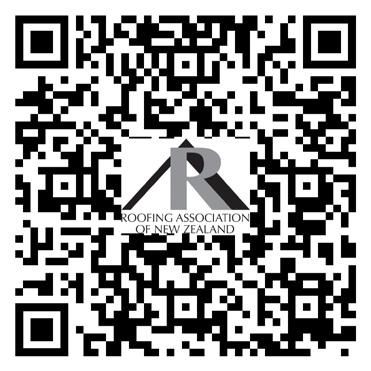
Building Performance also has a series of H1 Learning Modulesbuilding.govt.nz/about-building-performance/all-news-and-updates/ new-learning-modules-for-h1-energy-efficiency-and-insulation/
Building Code Hub –codehub.building.govt.nz

From 1 May 2023 new building work in homes must meet the new wall, floor, and roof insulation performance requirements. building.govt.nz
continued from page 33
Last year, I dealt with a complaint where the roofer simply dismissed the point that a roof leaked but went on to state that they had done additional work, which somehow made up for the fact that their (the roofer’s) work was leaking! An empathetic approach would be to say; we will get there and stop the leak. Offcuts of steel are in the garden and on the lawn? An empathetic response would be; we will clean that up immediately. Not, it’s only a couple of bits.
Not all clients are reasonable. They think their job is the only one you are doing. A day lost to weather is lost. You don’t get another one. Likewise, if you are delayed for whatever reason, you don’t park your team so that you can immediately restart. I have a complaint at the moment where the customer is seeking recourse after 14 years have gone by. The roofing company’s staff were there recently and said with empathy, but I doubt permission, ‘it was never done right to begin with’. Whose problem is that one now?
Supervision
Some complainants say they have been sent some youngsters who have not been supervised. Likewise, the staff who started the job have now been moved to other jobs, or the crew take off at smoko and lunchtime… you get the picture. This is down to a lack of supervision. Every project should be given the correct skill levels for the task, with a site lead that manages expectations correctly.
Professionalism
Professionalism comes down to taking ownership of the perception you want your clients to have about you and your team. Ask yourself, what is a professional way of completing that job?
• You present a quote promptly and communicate clearly what the quote contains, explaining your terms and conditions. You clarify that this is Form 1, which is required under the CCA and what that means to your client.
You hopefully close the sale or follow up at an agreed time.
• On acceptance, timing is explained and agreed upon, including what could impact the timing and what mitigations will be taken if there are impacts.
• Your client meets your supervisor/site lead, and phone numbers are exchanged. Any other contractors are identified, such as scaffolders, builders etc.
• You advise the client to inform their insurance company that work is being undertaken (not usually required for new work).
• Site access for your team and the owners/occupiers are established along with health and safety considerations.
• The work commences with processes in place that leaves the site tidy, safe and accessible at the end of each day.
• Completion sees a thorough appraisal of the work and site, which means it is left as, if not better than, it was when the work started.
• Warranties, Records of Work (sent where required) and depending on your payment terms, final invoice all sent in a timely manner.
This process reads more to re-roofing, obviously. We still receive complaints about new work. When the builder contacts us, it is because they are usually getting nowhere with their roofer. That must be a fun site to be on!
All this said, please be assured that very few members are complained about. Putting this into perspective, thousands of roofs are installed each year, and the number of complaints is very low compared to that number. However, I do see three common responses from roofers:
• Firstly, acceptance and ownership. We will fix it promptly.
• Secondly, fight. This response ranges from trying to justify poor work or non-compliance to being abusive with the client. This never works.
• Thirdly, flight . Ignore the noise, and it will go away. This never works. Which one is your business?
RANZ’s approach to complaints
Where non-members are involved, it is about getting the complainant to get a report so that they have the correct information – then to look to the LBP Board or Disputes Tribunal for help.
With a complaint about a RANZ member, we advise the complainant that we will let the member know that the client has been communicating with us. The best result is that the member makes good what needs to be corrected so that both parties return to where they were before RANZ was contacted. Transparency is paramount.
All of these issues highlighted take costly time to address when they arise, for starters. And we haven’t even counted the cost of re-work or the anguish for all concerned. Good on you for reading this far – there was a bit to get through!

35 Issue 104 • Autumn 2023
CUSTOMER SERVICE
"Not all clients are reasonable. They think their job is the only one you are doing. A day lost to weather is lost. You don’t get another one."
Support for roofing apprenticeships

Training a new roofer is a costly exercise. Here are two Government-funded schemes you can apply for to help with rising costs.
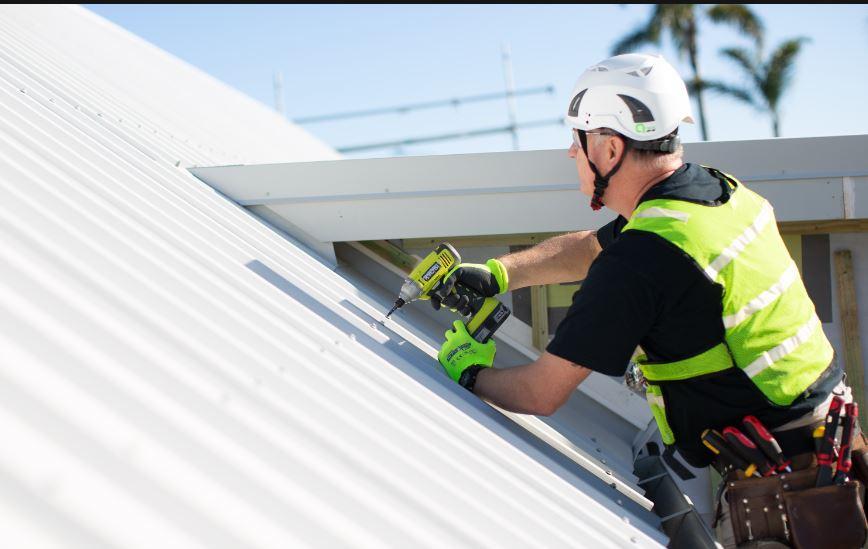
The roofing industry is currently experiencing high demand for skilled workers, and with the recent unexpected weather causing destruction, the need for skilled roofing workers is even greater. Apprenticeship programmes are a great way of growing and developing your business while ensuring that workers are trained to your high standards.
At the end of 2022, the Targeted Training and Apprenticeship Fund (AKA free trades training) ended, meaning that apprenticeship training costs are now $42 per week. The good news is that some apprentices may be eligible for free study via the Government’s
‘Fees Free’ programme. If an apprentice is a first-time learner, or their first tertiary education was covered by the Targeted Training and Apprenticeship Fund, they may be eligible to get their fees covered for one year’s study or two years’ training. You can check out if they are eligible here: www.feesfree.govt.nz
Additionally, employers of apprentices are eligible for a $500.00 per month Apprenticeship Boost as part of the Government’s Apprenticeship Support Programme. This payment is available through the Ministry of Social Development to employers of apprentices in the first two

CALLING ALL ROOFERS!
A roofing apprenticeship with Vertical Horizonz provides individuals with the opportunity to learn and develop their skills in the roofing industry.



To learn how to get started, you can give our friendly team a call, or you can visit our website for more info and check your free fees eligibility
years of their training. This is available for employers with existing and new apprentices and is currently available until December 2023.
The “Fees Free” and “Employer Boost” programmes have been really successful, having seen considerable increases in apprentices in the construction sector since their introduction in 2020 (over 80% increase in roofing trainees).
RANZ and Vertical Horizonz (VHNZ), alongside other trade and training organisations, are collectively asking the Government to consider extending the initiatives over a longer time period.
0 8 0 0 7 2 3 3 8 4 8 v e r t i c a l h o r i z o n z c o m r o o f i n g @ v h n z c o n z A L L R O O F E R S S T A R T F R O M T H E B E G I N N I N G - W I T H A N A P P R E N T I C E S H I P O N & O F F J O B L E A R N I N G E X P E R I E N C E D T R A I N E R S F E E S S U B S I D Y E A R N W H I L E Y O U L E A R N H E A L T H & W E L L B E I N G S U P P O R T R E G U L A R C H E C K - I N S
TRAINING
UPDATE
The H1 Roof
your solution to insulated roofing



To meet the requirements of H1 5th edition for roofs, Viking Roofspec offers the market a fully compliant, engineered warm roof solution, tested, and accredited by certified engineers, Holmes Solutions NZ.
Viking’s WarmSpan2 system is the result of having analysed every possible component and installation method, to arrive at the most cost-effective; design-flexible; membrane warm roof assembly.
Being the thinnest membrane assembly at R6.7, WarmSpan2 has a thickness of only 141.4mm from the top of the vapour barrier to the underside of the membrane surface (or R4.3 at 91.4mm). This promotes tasteful design lines by keeping parapets low.
Fully adhered membrane (two options)
Coverboard
Insulation
Self-adhered Vapour barrier

Substrate (two options)
WarmSpan2 offers cost reductions on materials and labour

Viking WarmSpan2 has been engineered to minimise the time required for installation and materials needed. The 900mm support centres (versus traditional 400mm centre support system), along with heavily reduced nogging due to the tongue and groove plywood edges, results in approximately 3x less structural requirements including snow loading. To put this in context, this would equate to approximately $9,000 savings in materials and labour for a 200m2 roof – before the actual warm roof has even been installed.
Seeing the ply is an interior structural component, it only needs to be H1.2 treated. It can be DD grade and just as importantly, the construction programme won’t be held up waiting for the moisture content to dip below 20% before commencement. The warm roof
installation can happen as the ply continues to dry until its ready for inspection time.
The high R-value of 135mm foil-faced PIR (6.5 on its own) alleviates the need to use an extra layer of PIR for the complete roof assembly to meet the minimum R-value of R6.6; reducing handling time. The full assembly renders R6.7 (or R4.3 with 85mm foil-faced PIR).
The WarmSpan2 system is backed by a 20-year warranty and can only be installed by a Viking Roofspec Approved Applicator.
For more information on Viking’s WarmSpan2 system visit www.vikingroofspec.co.nz/the-h1-roof/
www.vikingroofspec.co.nz
Introducing the RANZ Roofing Guide App


This new online platform means you and your team will be able to view the leading training resource content on-the-go, from any nominated device, via team subscription.

With support from NZMRM, we’ve had this platform developed for you to enable comprehensive roofing guidance and support for all your team’s on-the-job reference and planning needs.

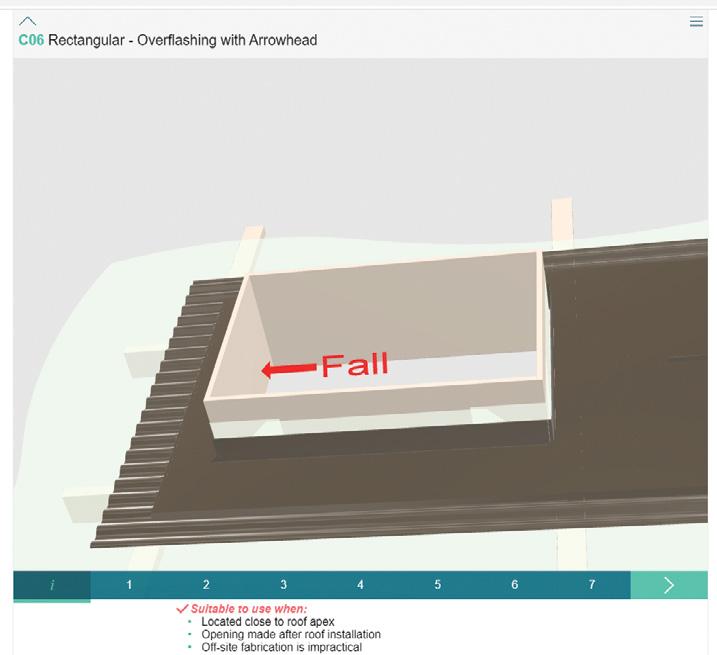

As RANZ Members you have exclusive market release and member discounts.
To set up your access you’ll simply enter a brief form, and be asked to nominate a “coordinator”. Your Roofing Guide Coordinator may be you, or somebody else on your team, who will be able to then manage your team’s access to the platform via assigning the relevant users, with full flexibility to change these as and when required.
Please note:
If your organisation is an NZMRM member, please contact your established coordinator - or email support@roofguide.co.nz for clarification.
To sign up:
See your RANZ Member email updates, or email support@roofguide.co.nz for more information.
It’s here – the RANZ How To Roofing Guide series is now available to you online, in interactive 3d. We’re proud to bring you the RANZ Roofing Guide app.
ROTATE IN 3D ROTATE IN 3D
Meet the Network
Noel Sands Product Development, Edging Systems (NZ) LTD
Q Where are you based?
A At home, in Long Bay, Auckland.
Q Years in roofing?
A I am not a qualified roofer. However, I have been involved in the roofing industry, as a supplier, since 1986.
Q How did you get started?
A I was with ‘Hylton Parker Fasteners’, one of the first companies to be involved with manufacturing and distributing self-drilling screws for roofing. Everyone referred to these as ‘Tek Screws’. HPF (now KONNECT) trademarked the ‘Timbertite’ and ‘Steeltite’ names for screws that self-drill into those relevant base materials/purlins. We went on to design/manufacture screws for fixing all non-ferrous metals. I was involved in the late ‘80s, ‘90s and 2000s with Standards for Roofing Fasteners.
Q Family nucleus?
A I’ve been married for nearly 53 years and have three children and five cracker grandchildren from 21 down to identical twins aged 5.
Q What motivates you?
A My primary motivation is making sure I wake up tomorrow! Life is so important with family; I want to ensure I live every day to the max. That doesn’t mean I am 100mph every minute, but I love life.
Q What do you do day to day?
A I am lucky that my role with Edging Systems is pretty low-key. I can’t reveal what I do every day; otherwise, Max would fire me, but the occasional fishing trip and calling on selected clients does come to mind.
Q Favourite products/brand? Why?
A My favourite products/brands would have to have been those I was
involved with designing, manufacturing, and selling. HPF/KONNECT and ESL are respectable companies I deem ‘companies with a conscience’.
Q Favourite roof?
A I have been involved in many fashionable roofs, from domestic ones to the ‘Cake Tin’ in Wellington. Standing-seam copper roofing is fantastic and, done correctly, will outlast the building it sits on.
Q Favourite beach?
A My favourite beach happens to be the one we own. It’s east of Warkworth, 50 mins from Auckland City. On a good day, you can still catch snapper off the Bach steps at high tide.
Q Favourite movie?
A The greatest of all movies would have been ‘Forrest Gump’. All emotions, craziness, and laughter all thrown into the mix.
Q Favourite brew o’ beer or wine?
A I have a liking for the occasional brew or two, and Heineken would have to be my favourite.
Q What’s on my playlist?
A From the Stones, Beatles, Van Morrison, and Country, my music taste is strange, but no head banging, as I get too dizzy.
Q What makes a top roofer?
A Time, quality, and patience. After watching two years of the Roofing Games throughout New Zealand, you can see who will be in the winner’s circle.
Q Where will roofing be in 20 years?
A In 20 years, I hope ALL Roofers will be licensed in their respective fields and have come through an apprenticeship scheme. I was at the first meeting in Tauranga to start RANZ, and it would be lovely to see RANZ still operating in 2043.
ROOFING GUIDES
To purchase please email admin@ranz.co.nz
METAL WALL CLADDING
published 2020
A step-by-step illustrated guide to flashing critical junctions for residential wall cladding.
Members $25 + GST + postage
Non-Members $50 + GST + postage
METAL ROOF FLASHINGS
published 2013
A unique and innovative step-by-step illustrated guide to flashing critical junctions and penetrations for residential roofing.
Members $15 + GST + postage
Non-Members $30 + GST + postage
METAL ROOF PENETRATIONS
published 2014
A step-by-step illustrated guide to flashing rectangular and round penetrations in corrugated and rib-profiled metal roofing.
Members $20 + GST + postage
Non-Members $40 + GST + postage



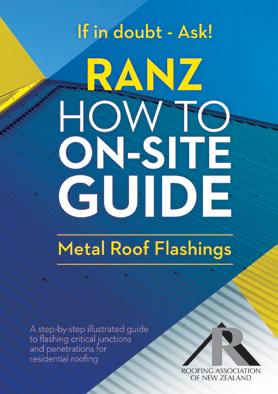






39 Issue 104 • Autumn 2023
MEMBERSHIP NEWS
RANZ
Metal
A step-by-step illustrated critical junctions and penetrations for residential wall cladding
Wall Cladding
Long Bay, Auckland
The Cake Tin, Wellington
CALLING NEW ZEALAND’S BEST ROOFERS, DESIGNERS & ARCHITECTS
For over 40 years, we have been creating high-quality steel from rich New Zealand ironsand. COLORSTEEL® turns metal into magic and, with your craftmanship, builds incredible structures. It’s now time to celebrate what we have created together.
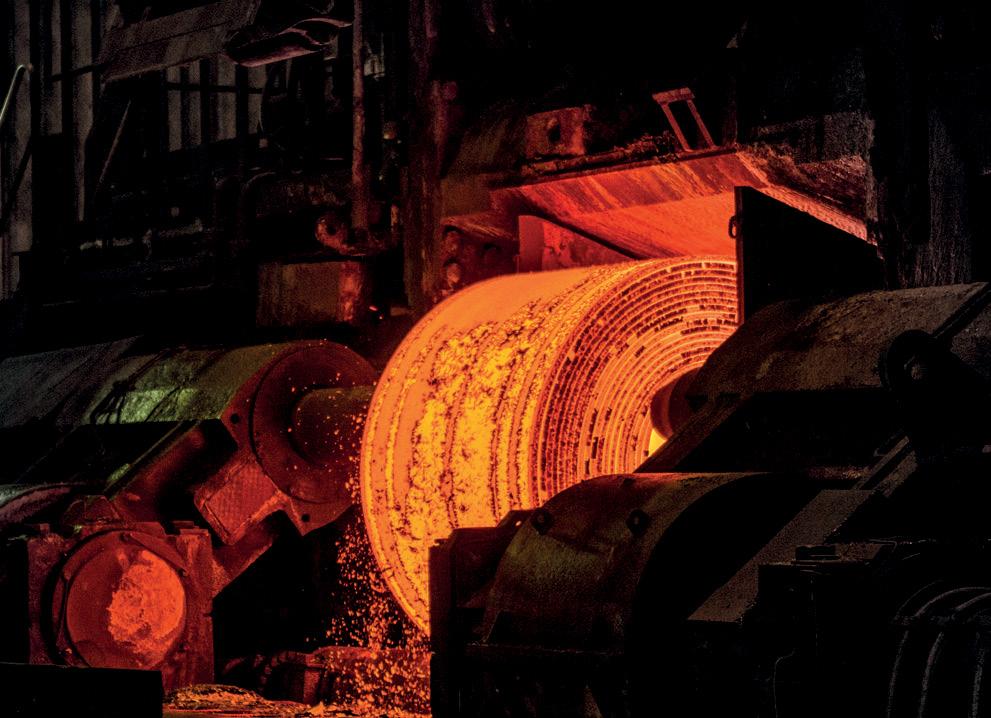

Roofer of the Year | $10,000 Prize
New Roofer of the Year | $10,000 Prize
Residential Building of the Year | $10,000 Prize

Commercial Building of the Year | $10,000 Prize
And a special acknowledgement award for Service to Roofing, to recognise those that have made a significant contribution to our industry.
ENTER & NOMINATE FROM 1 APRIL AT COLORSTEEL.CO.NZ/AWARDS

















































































































































